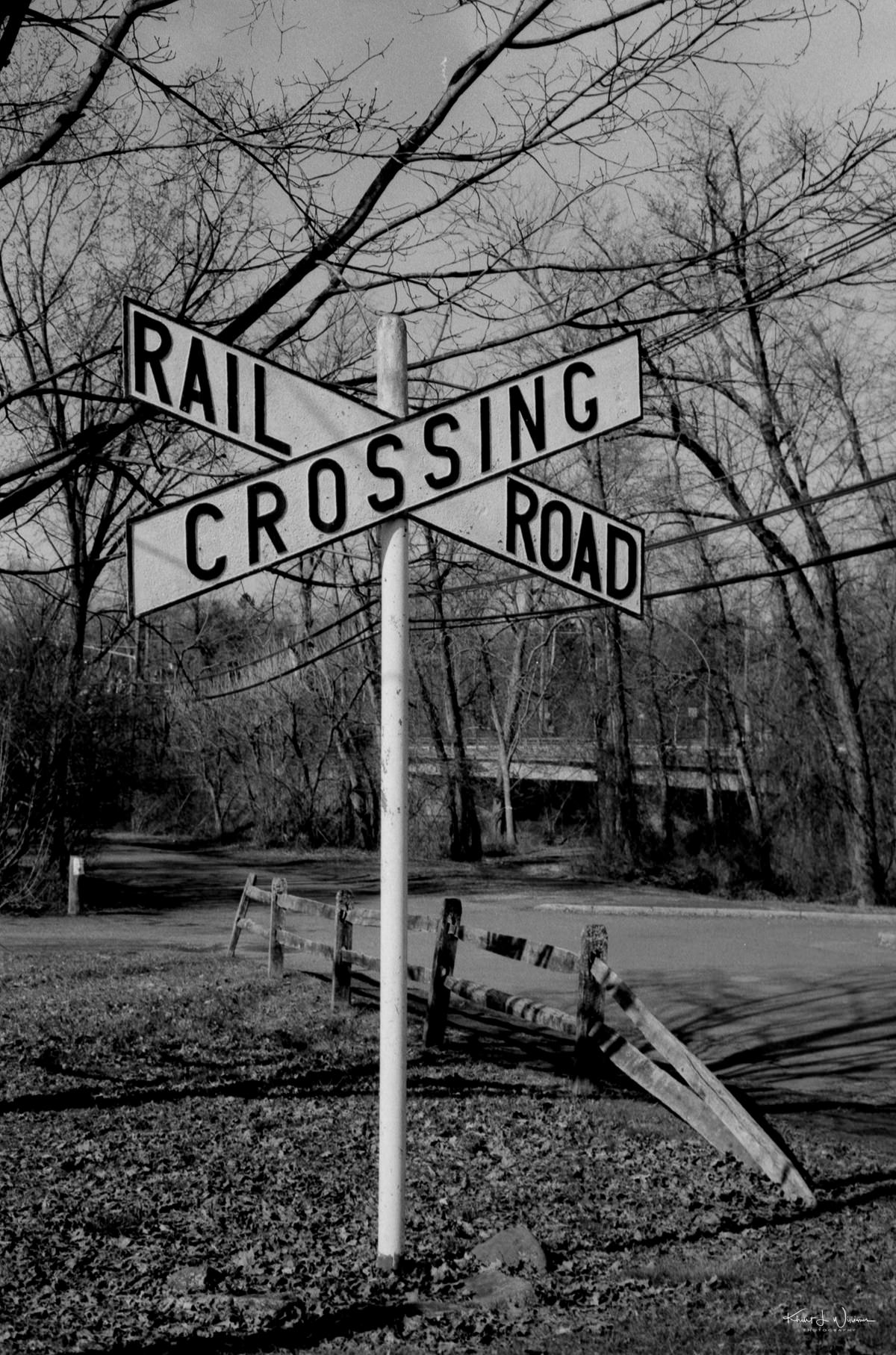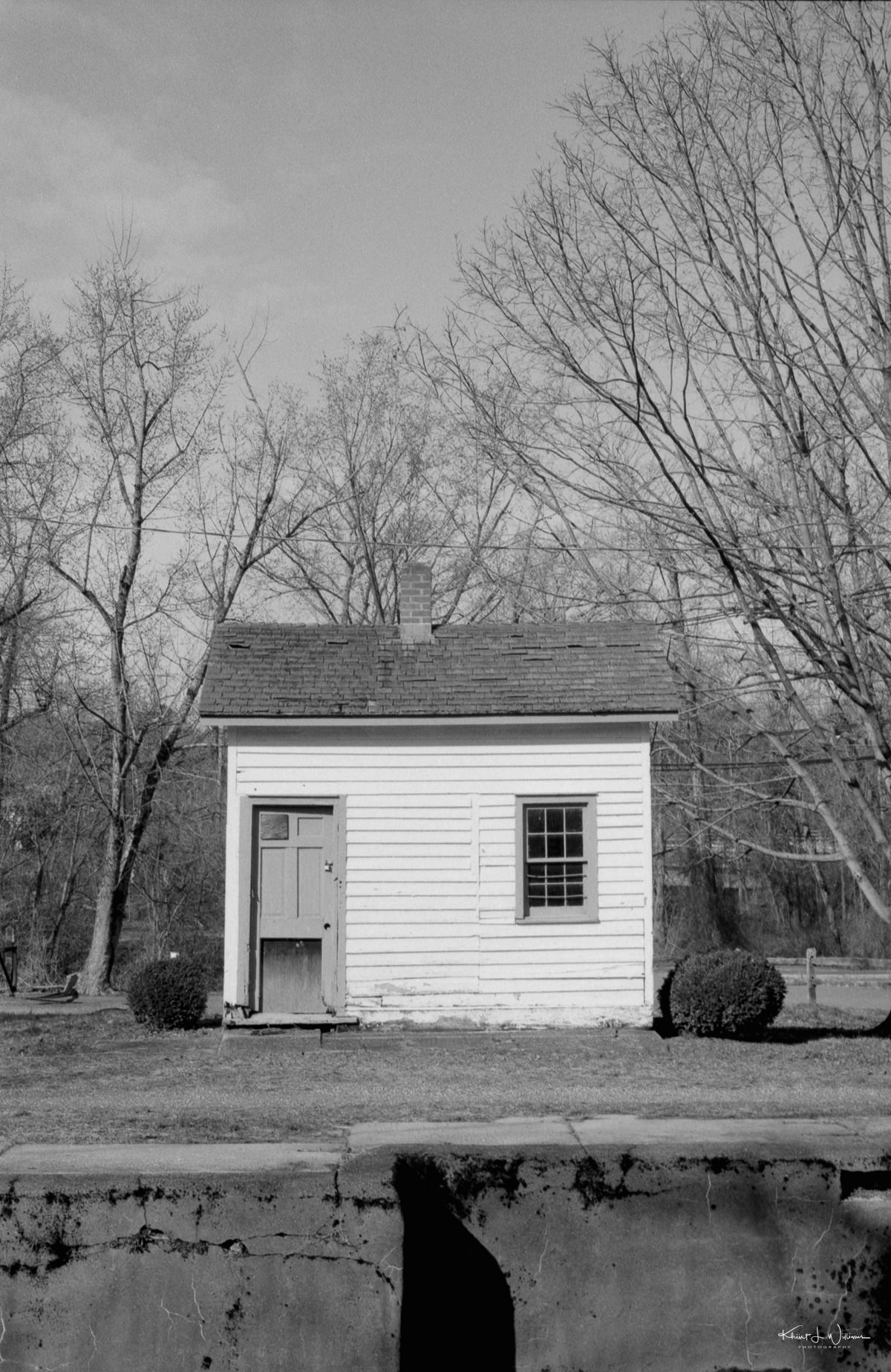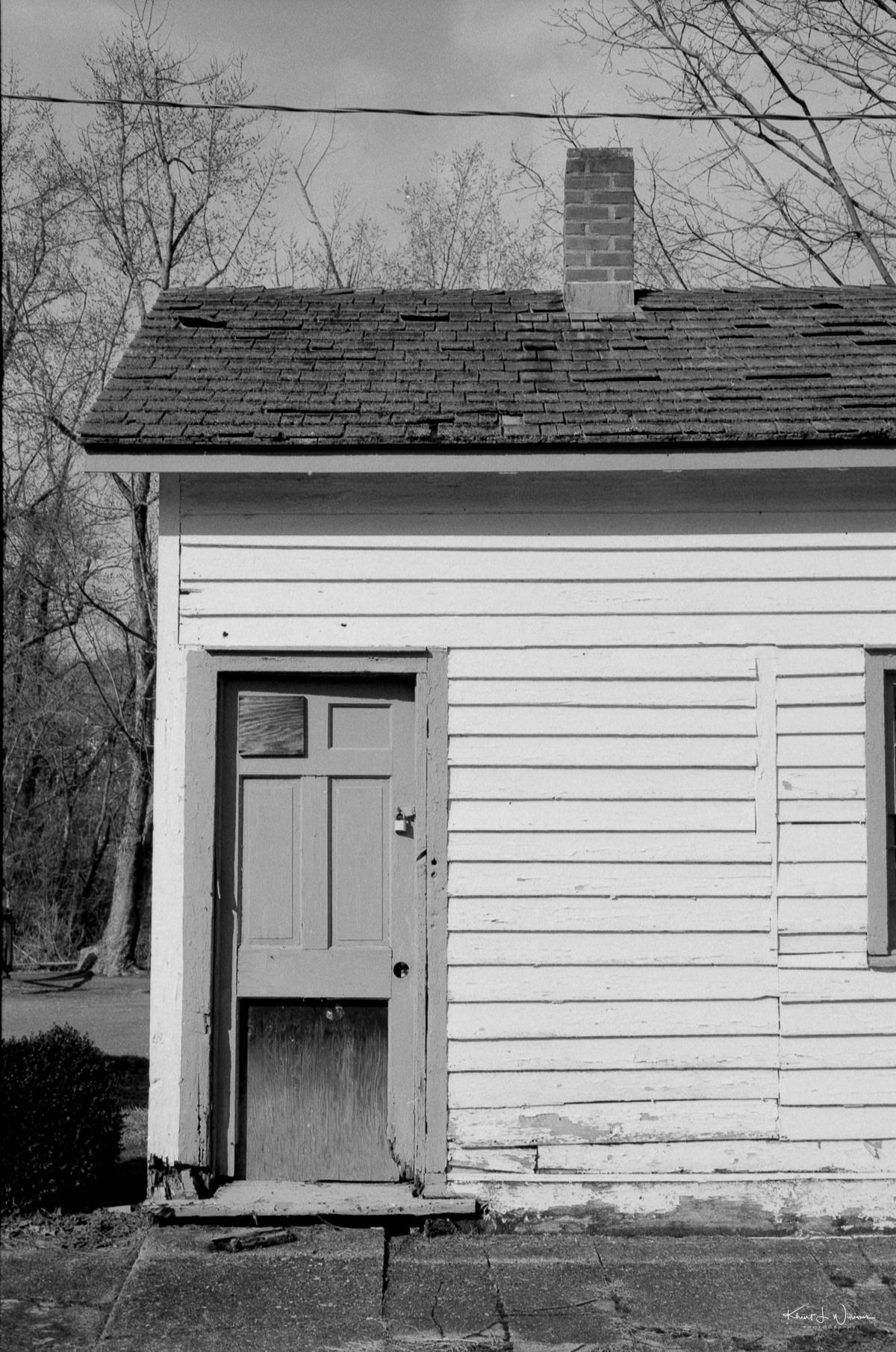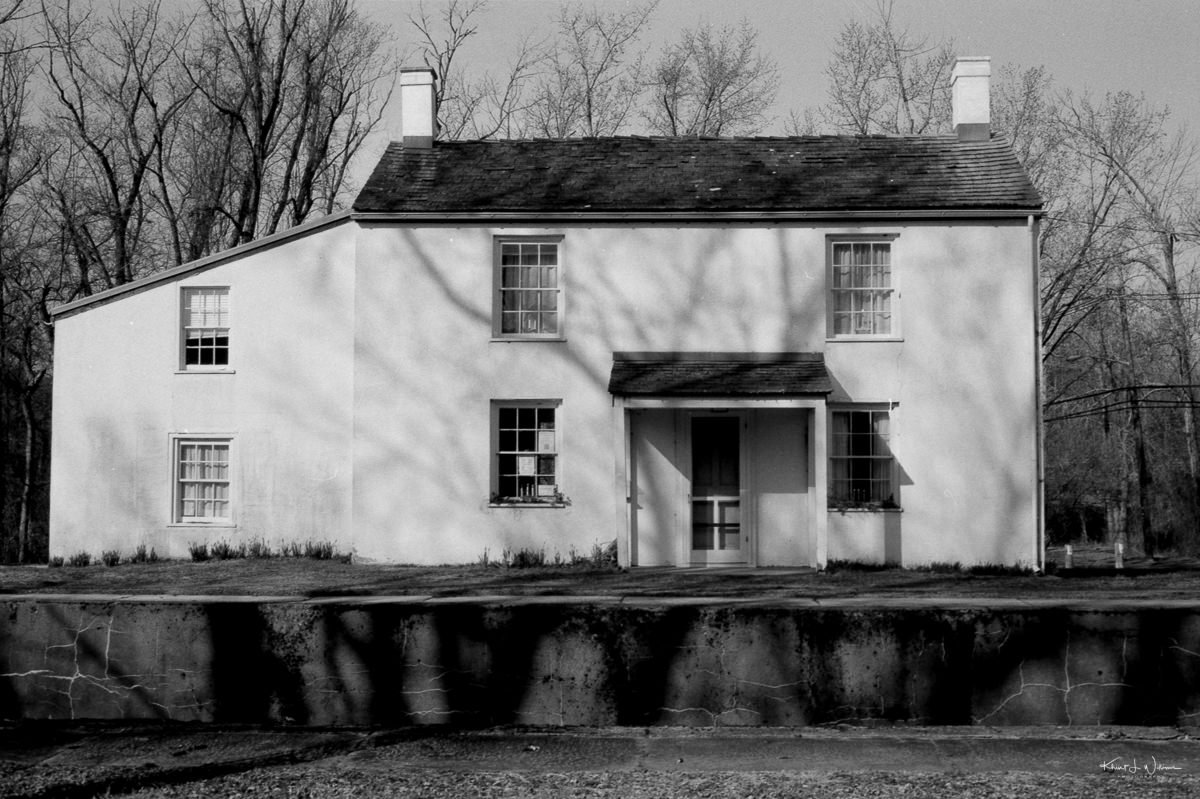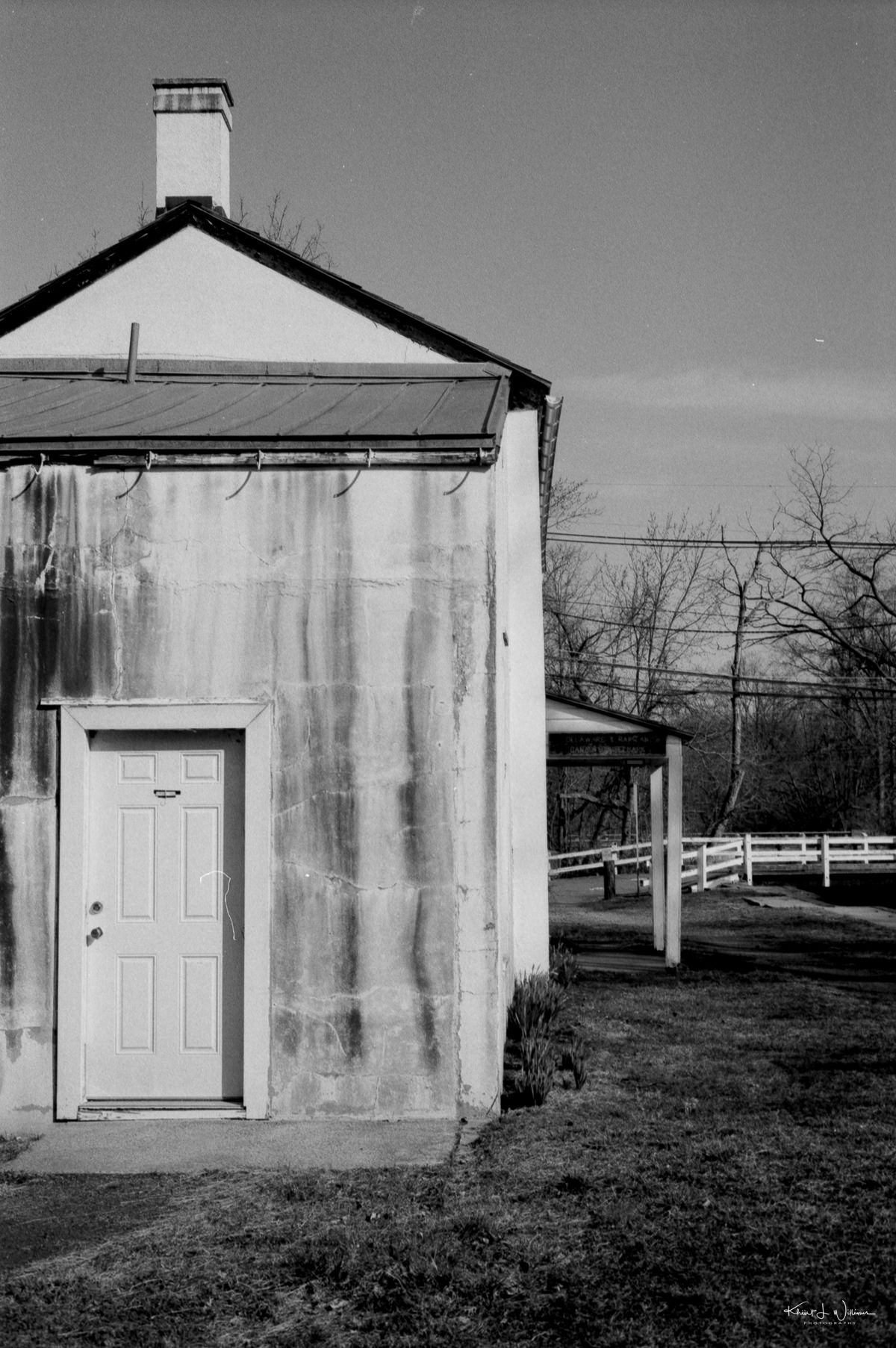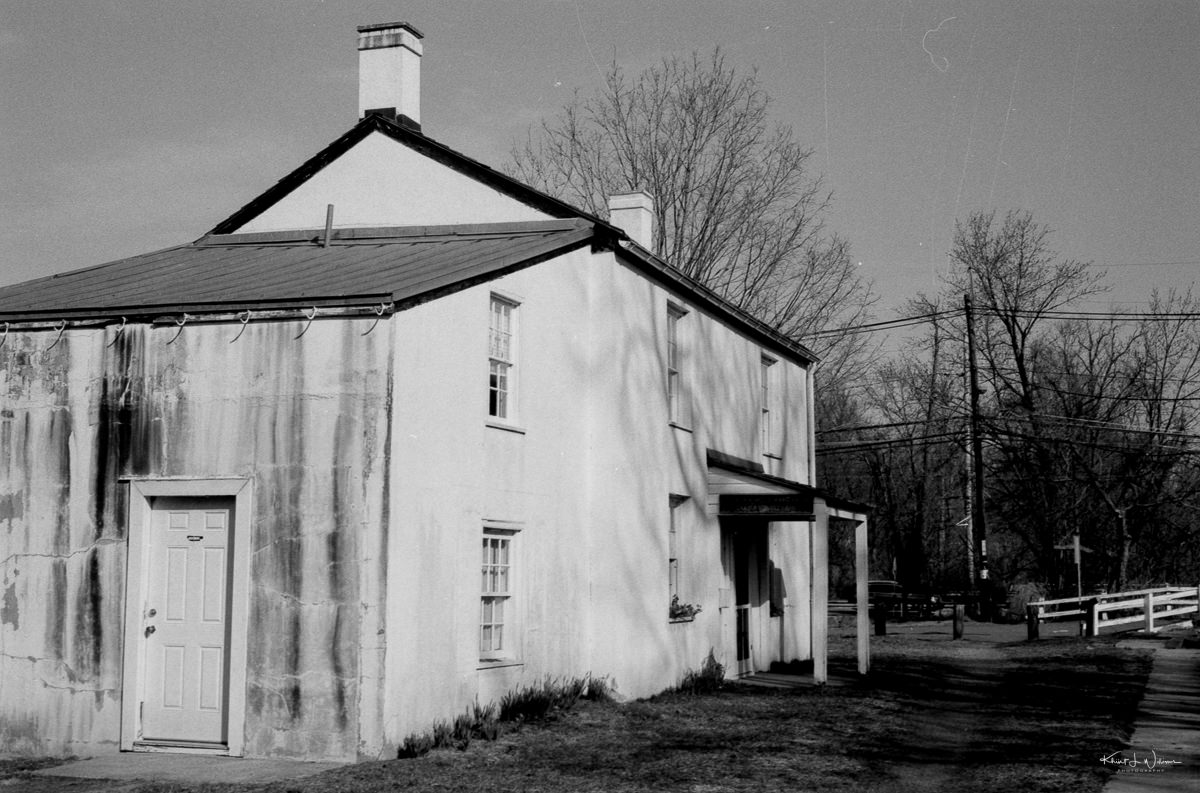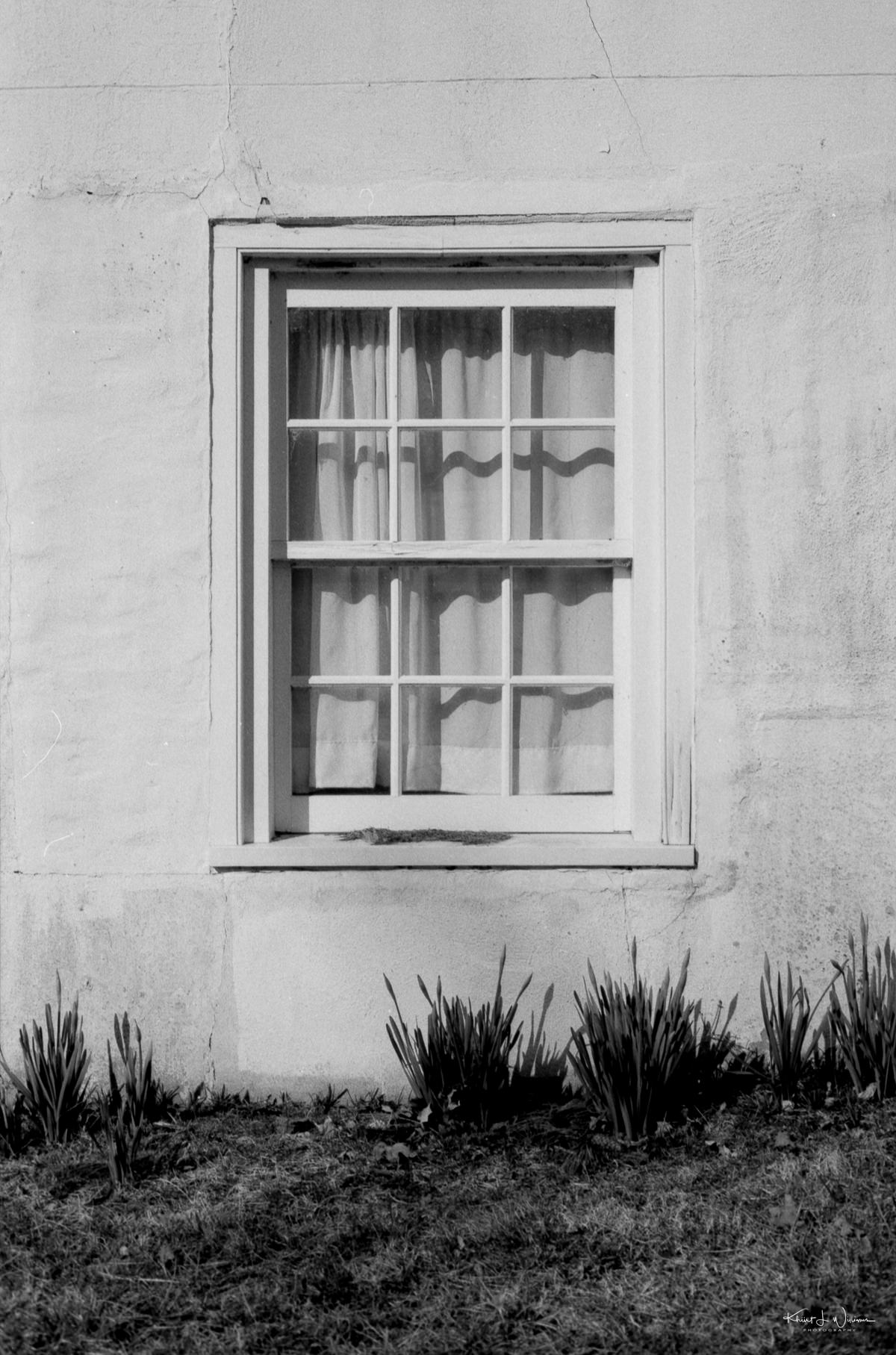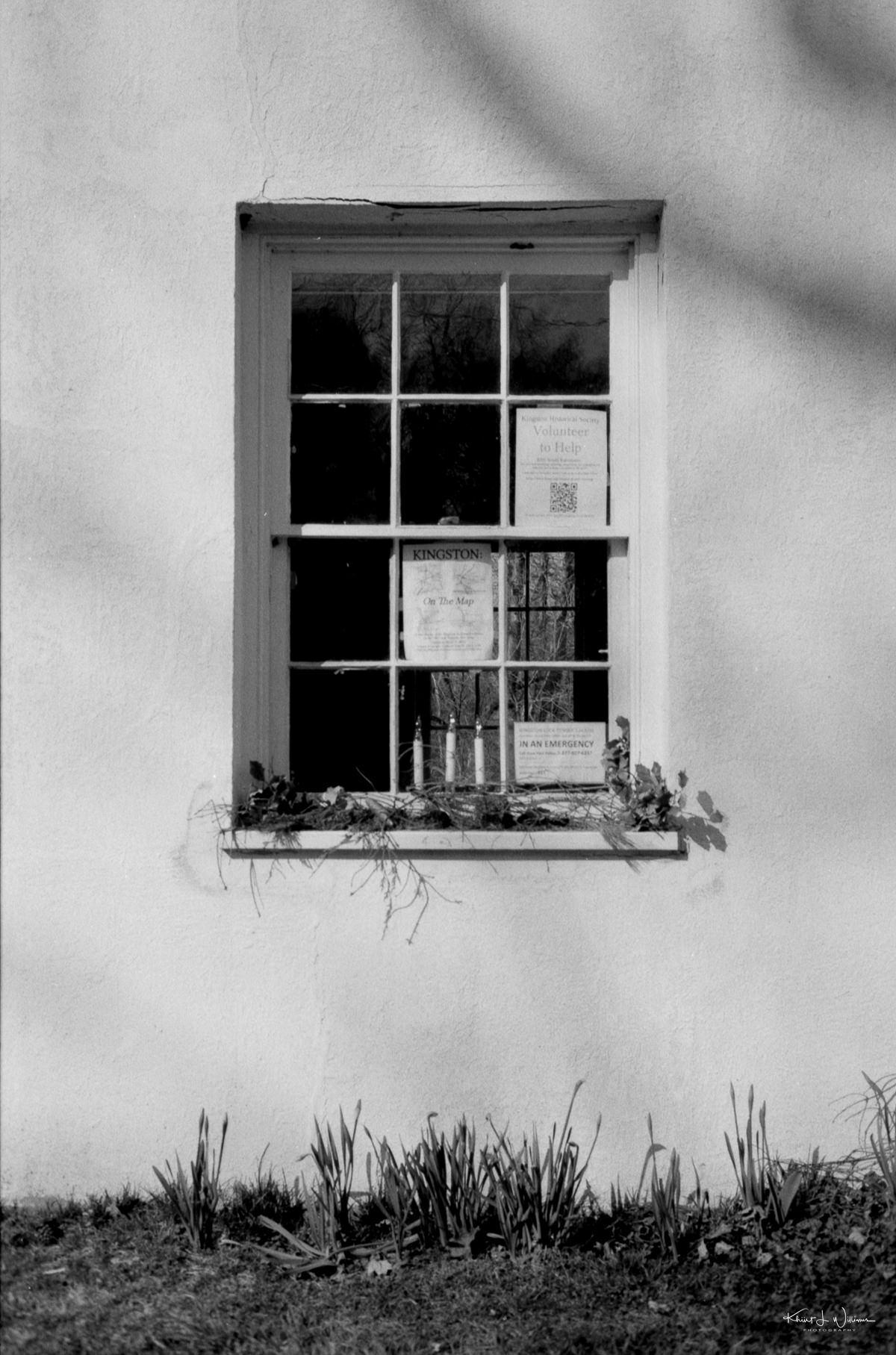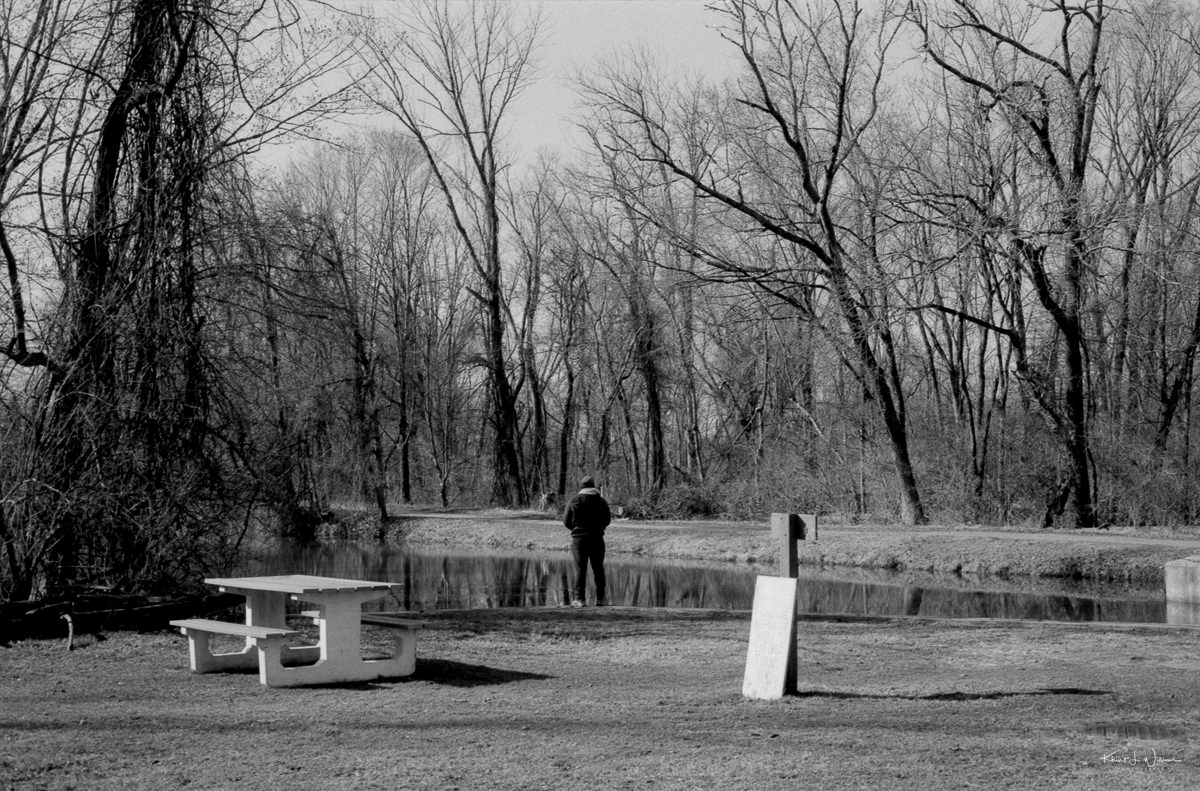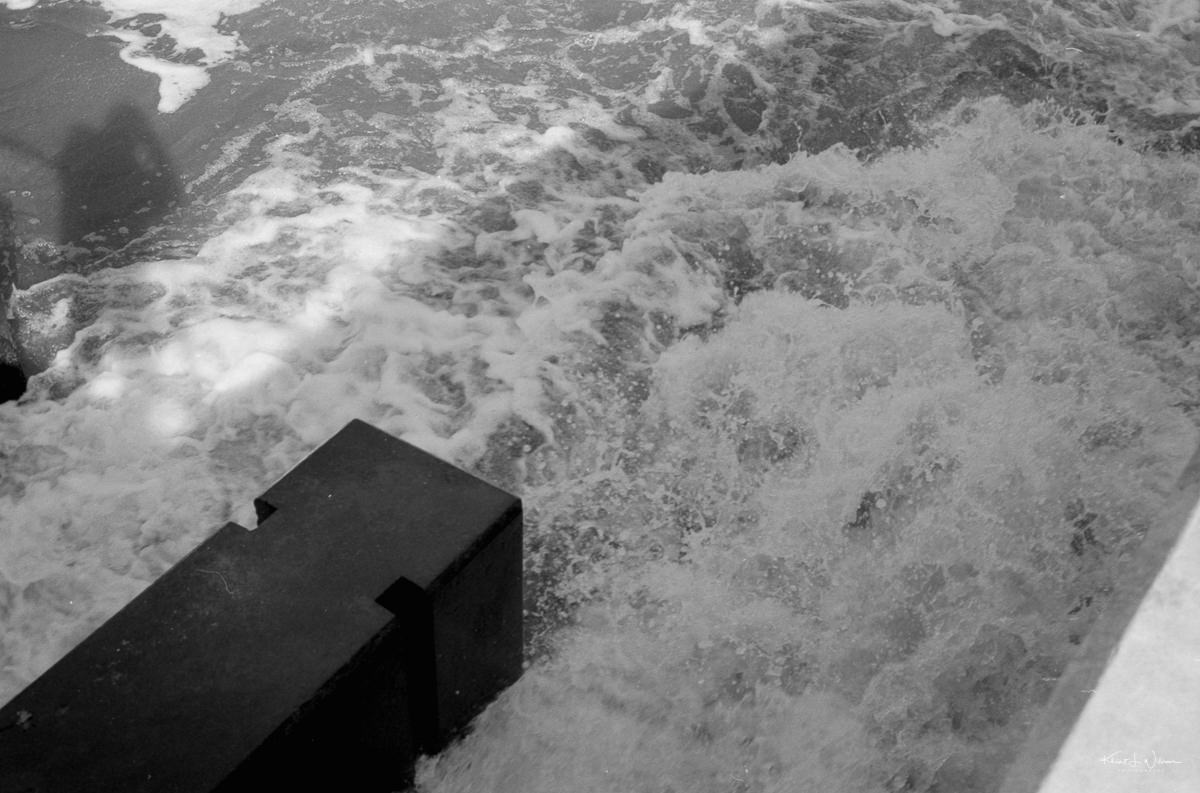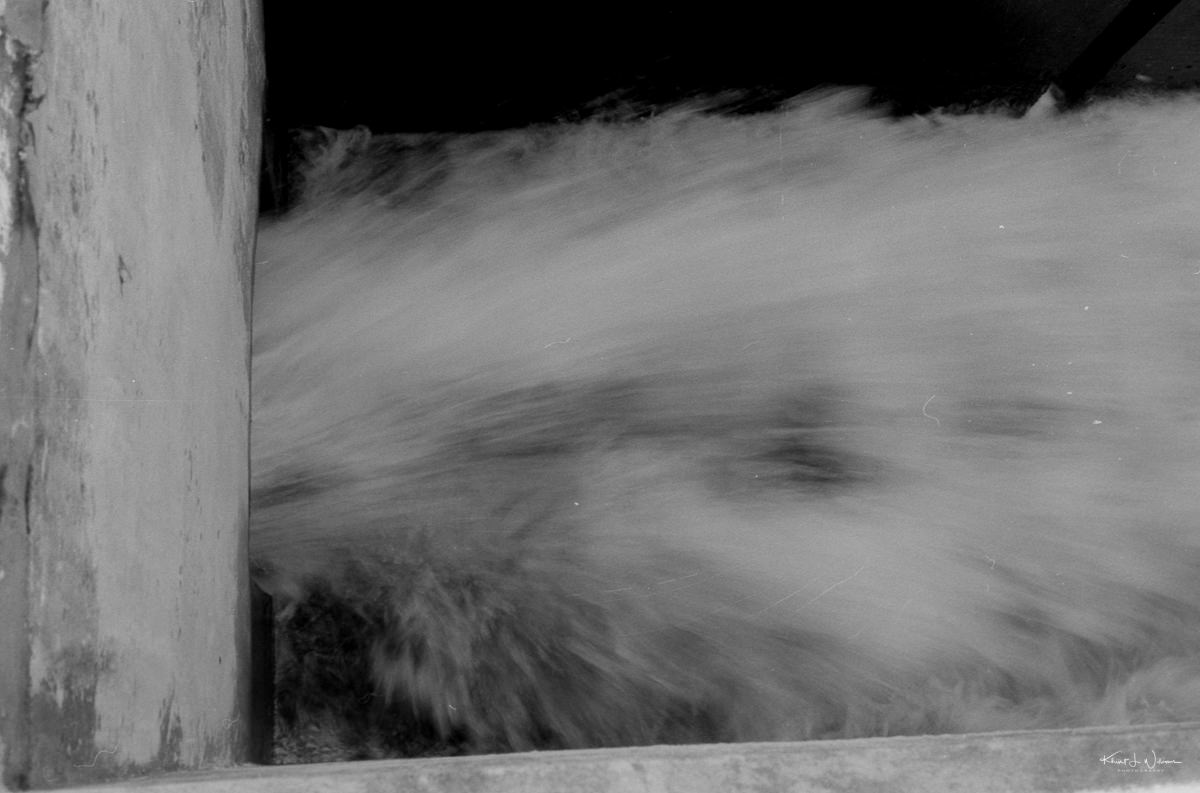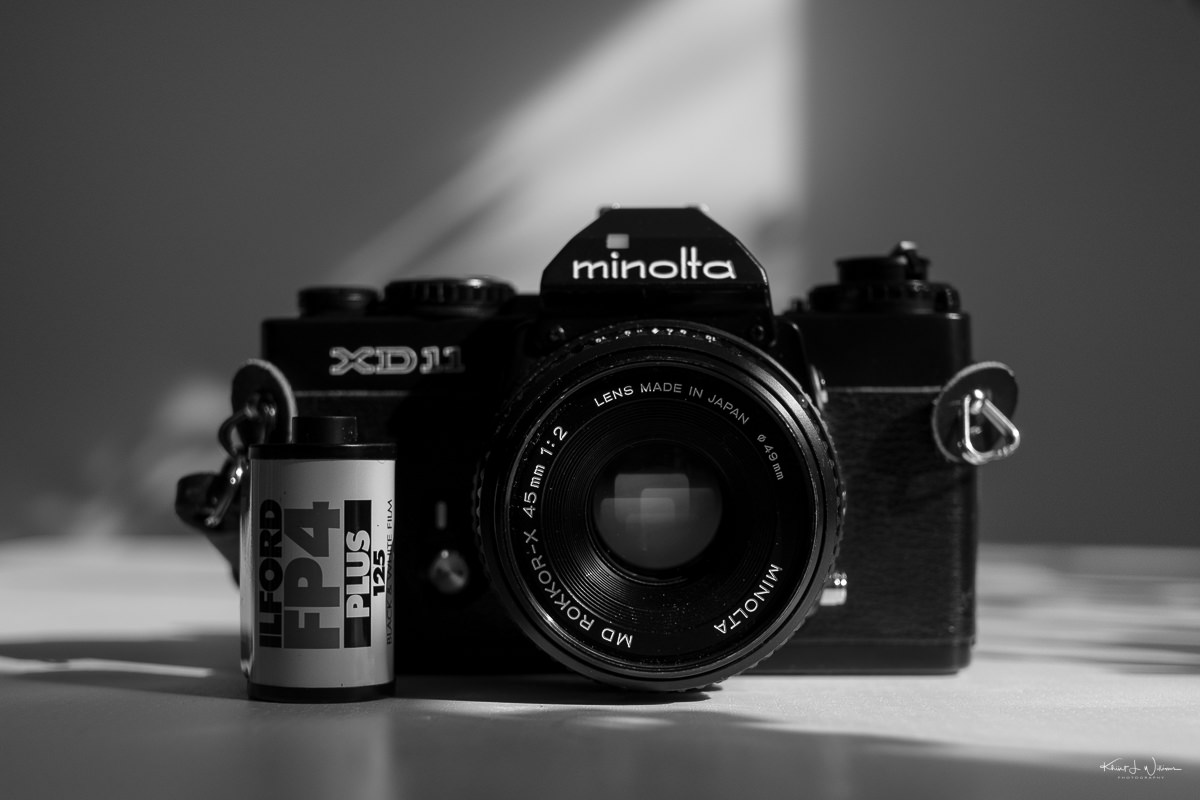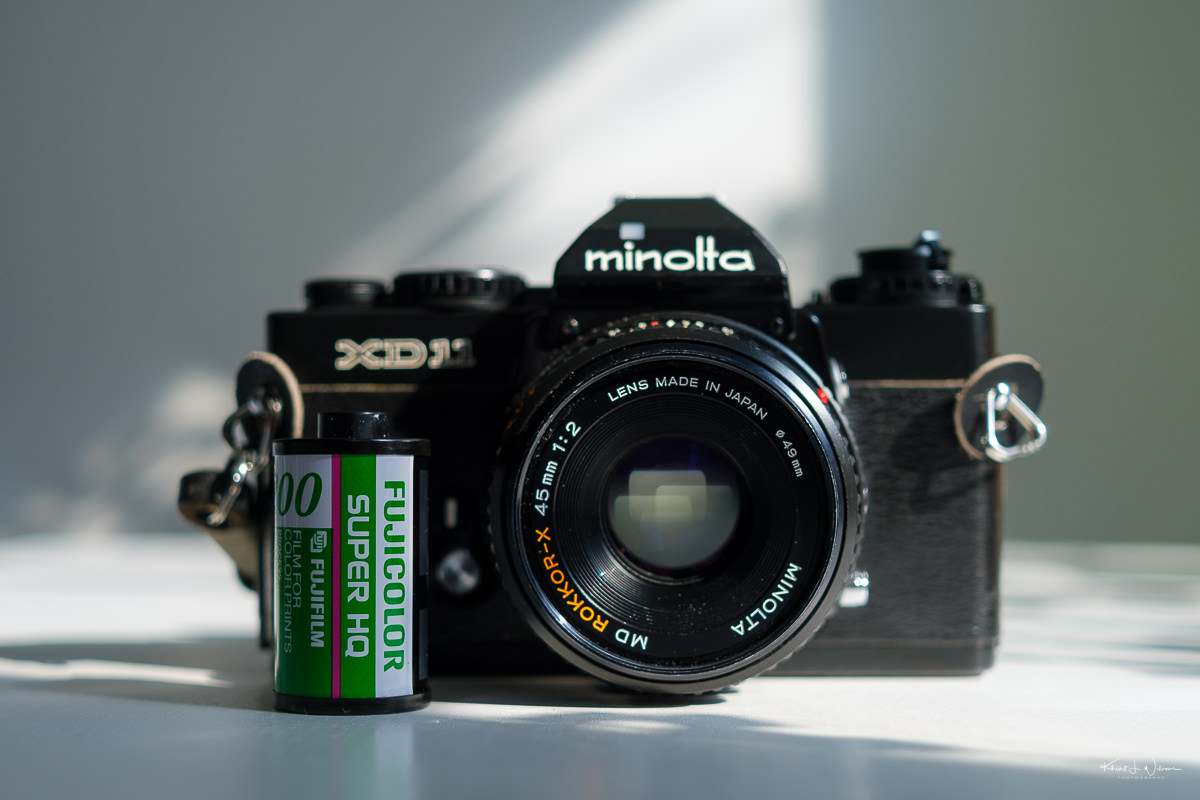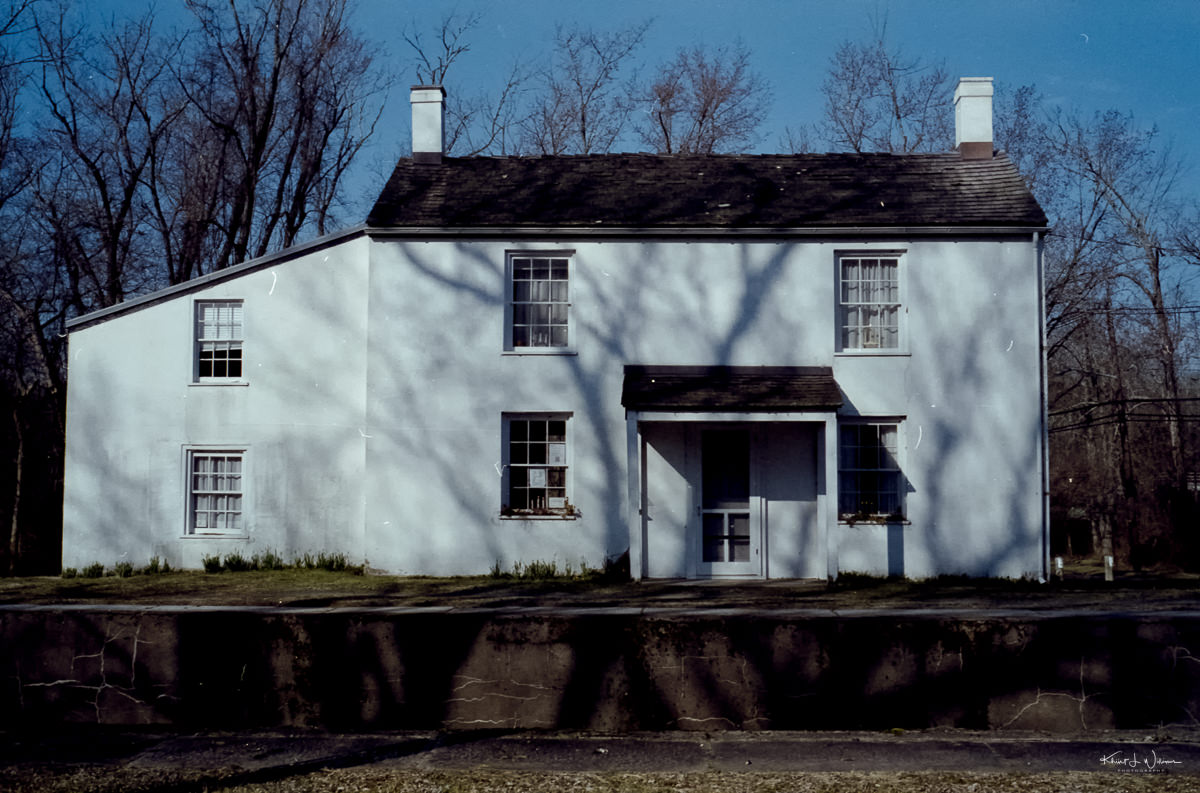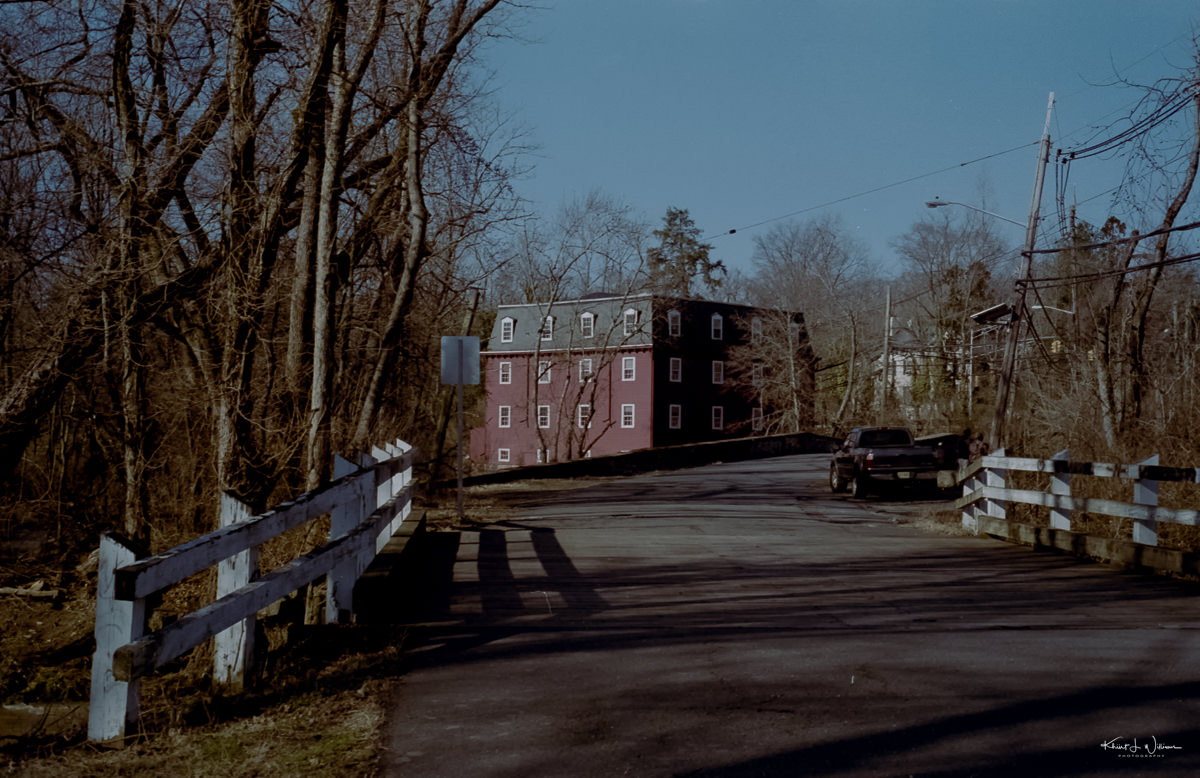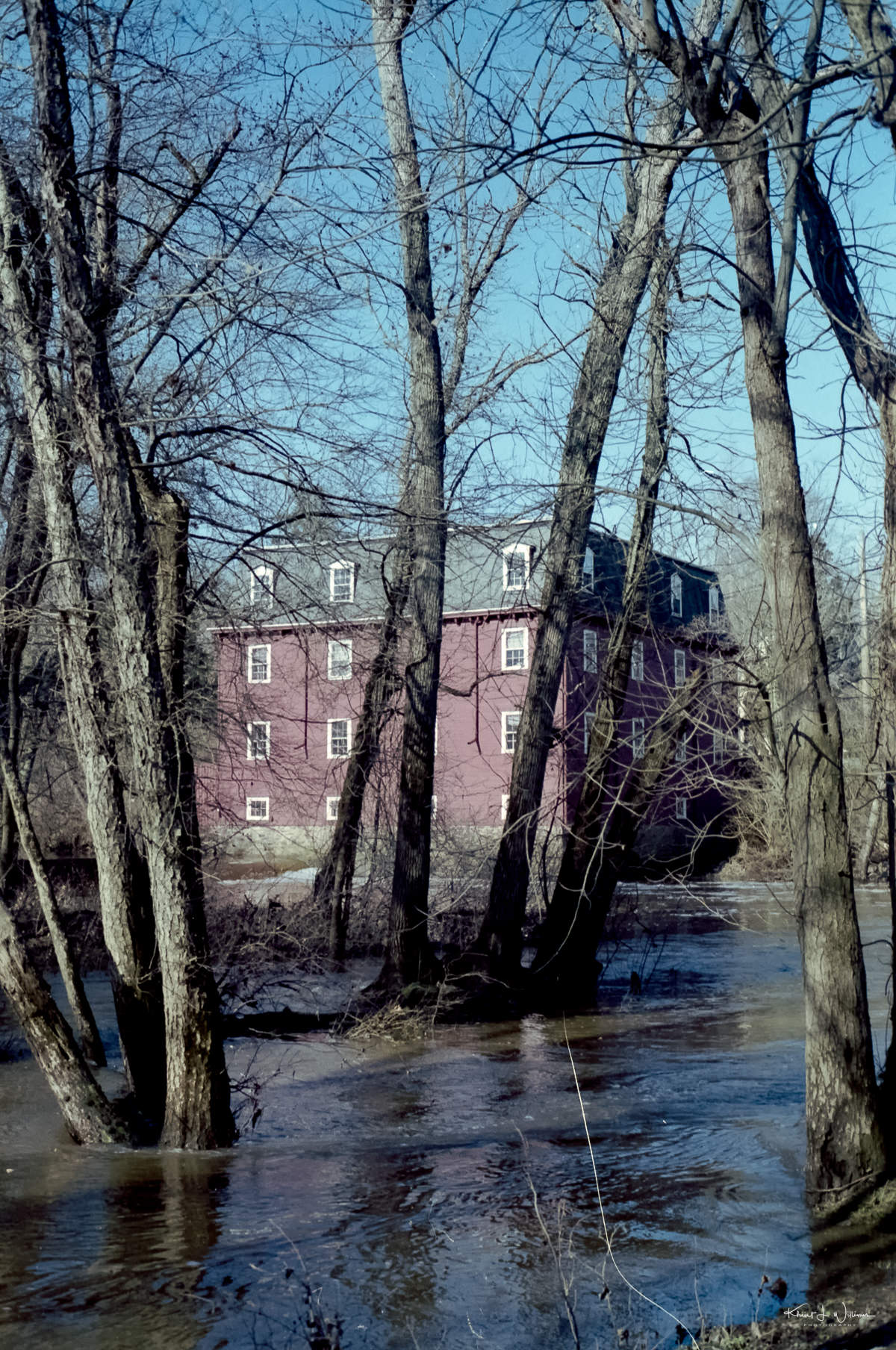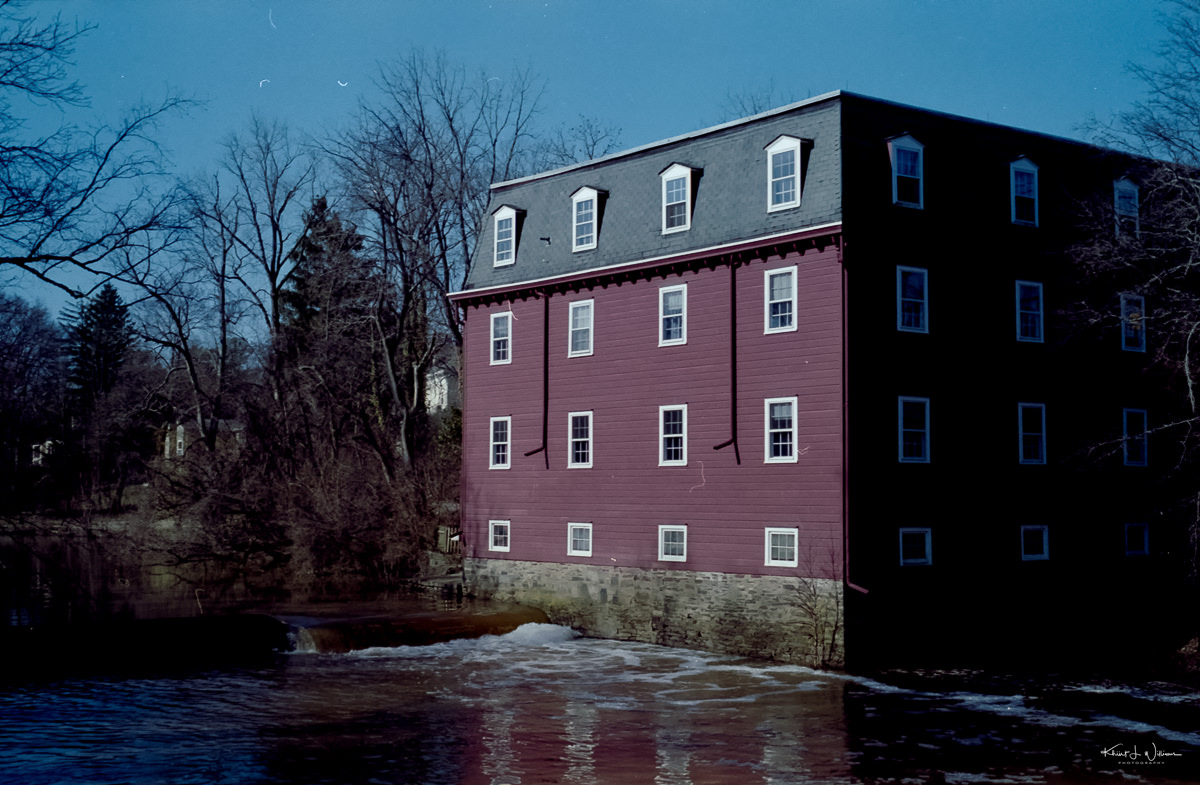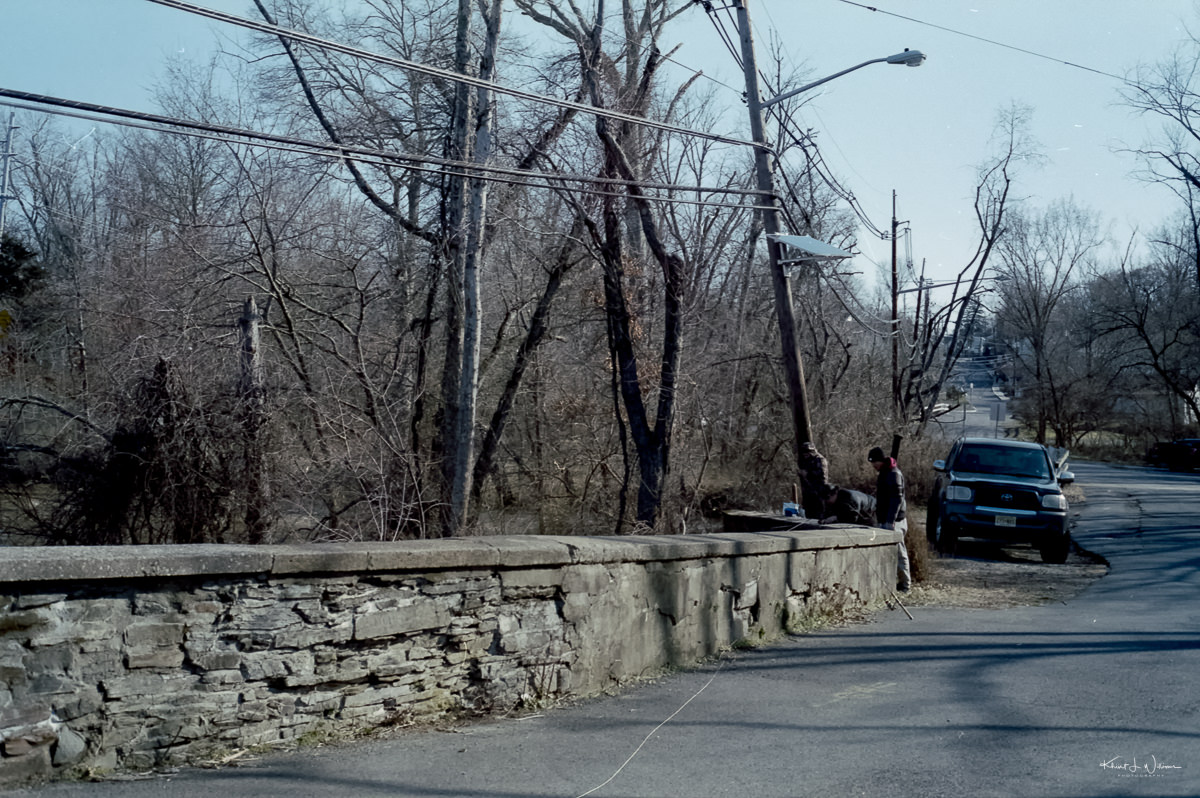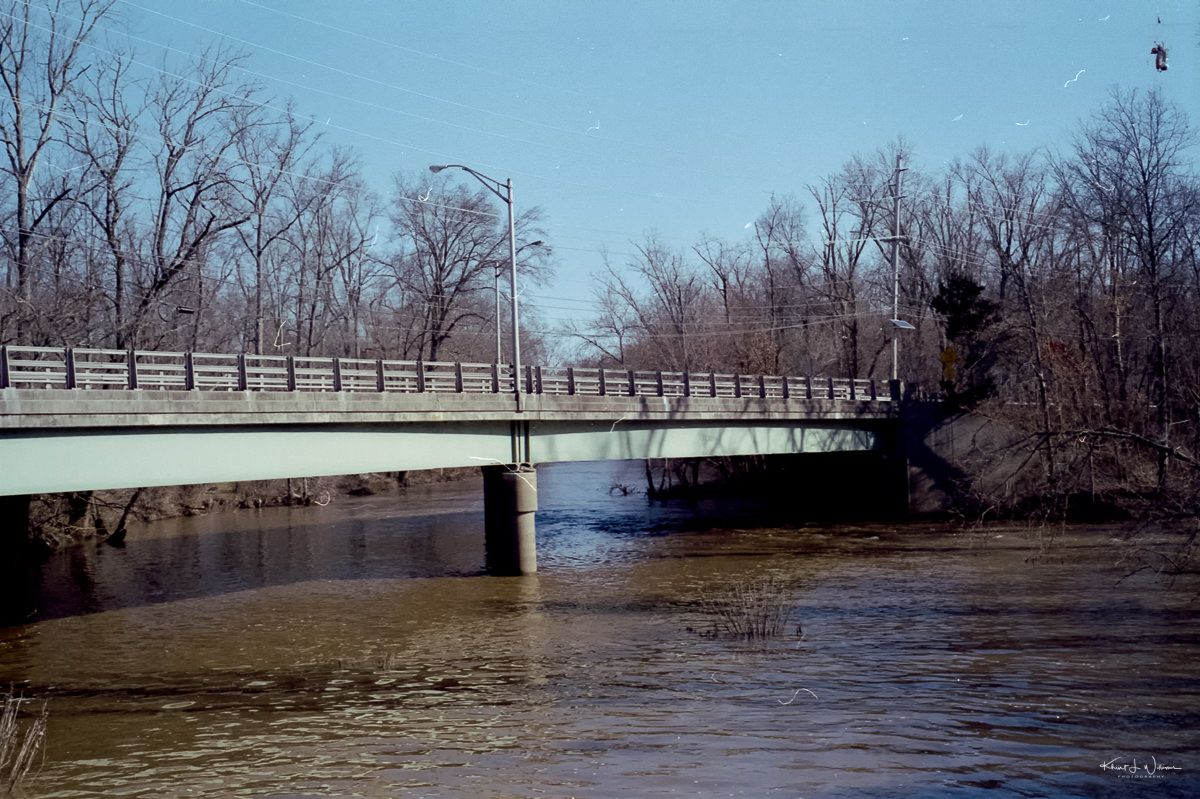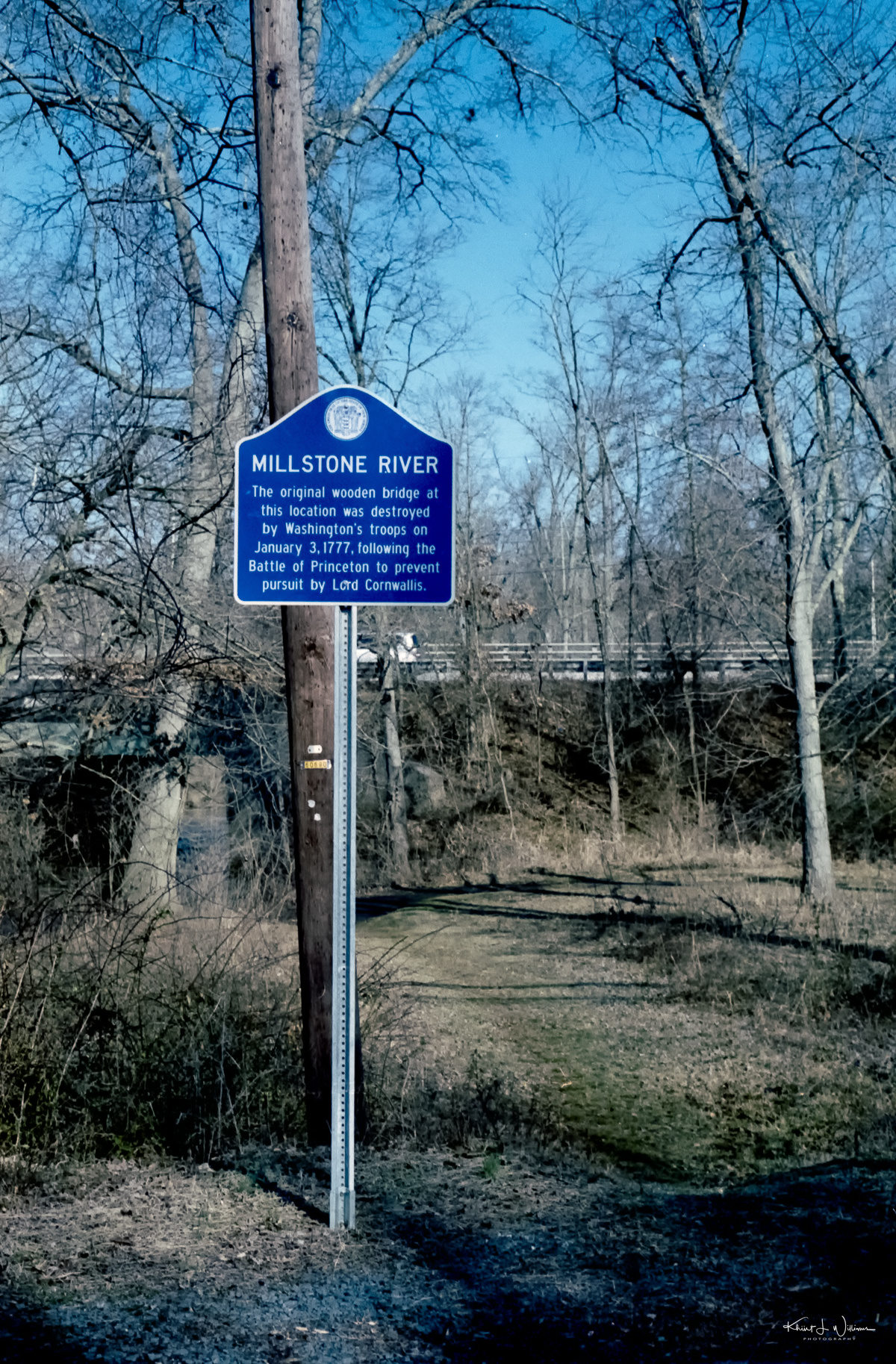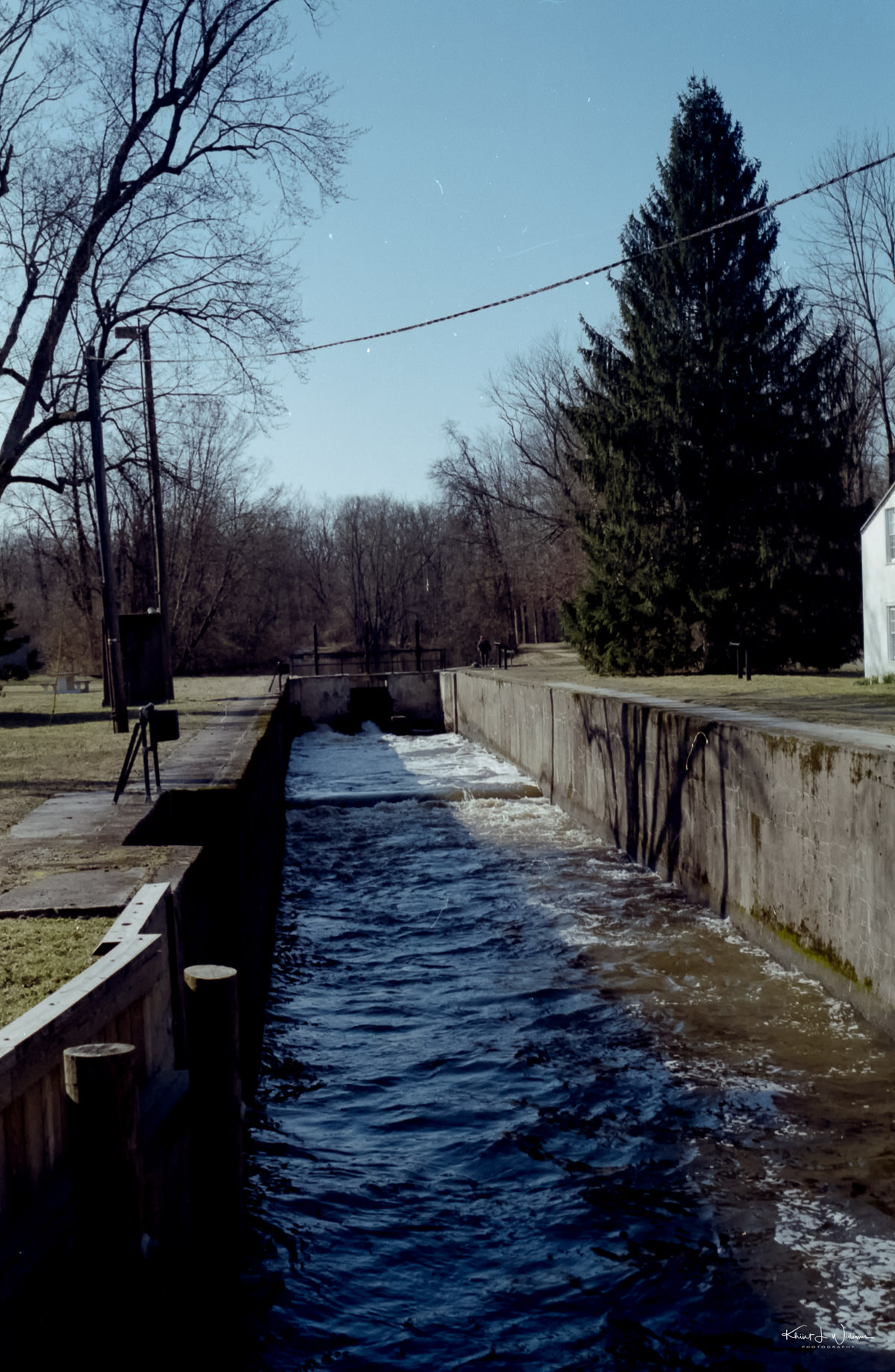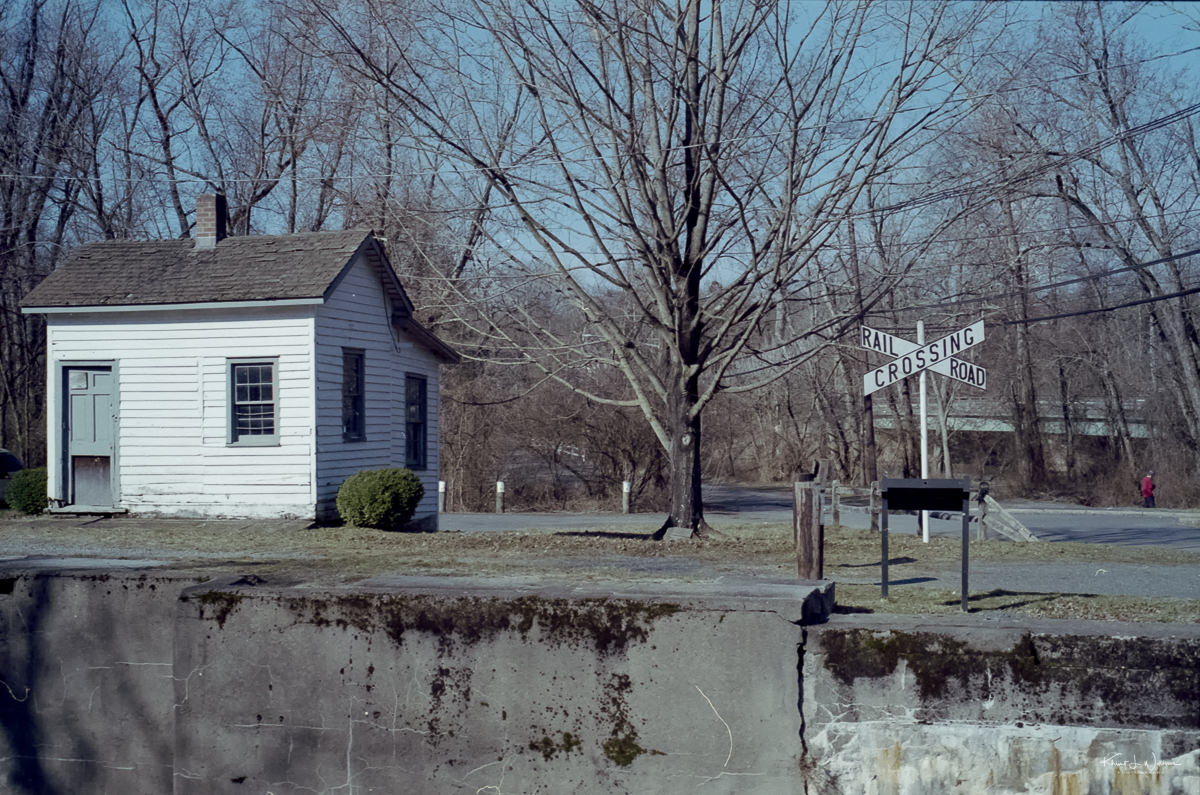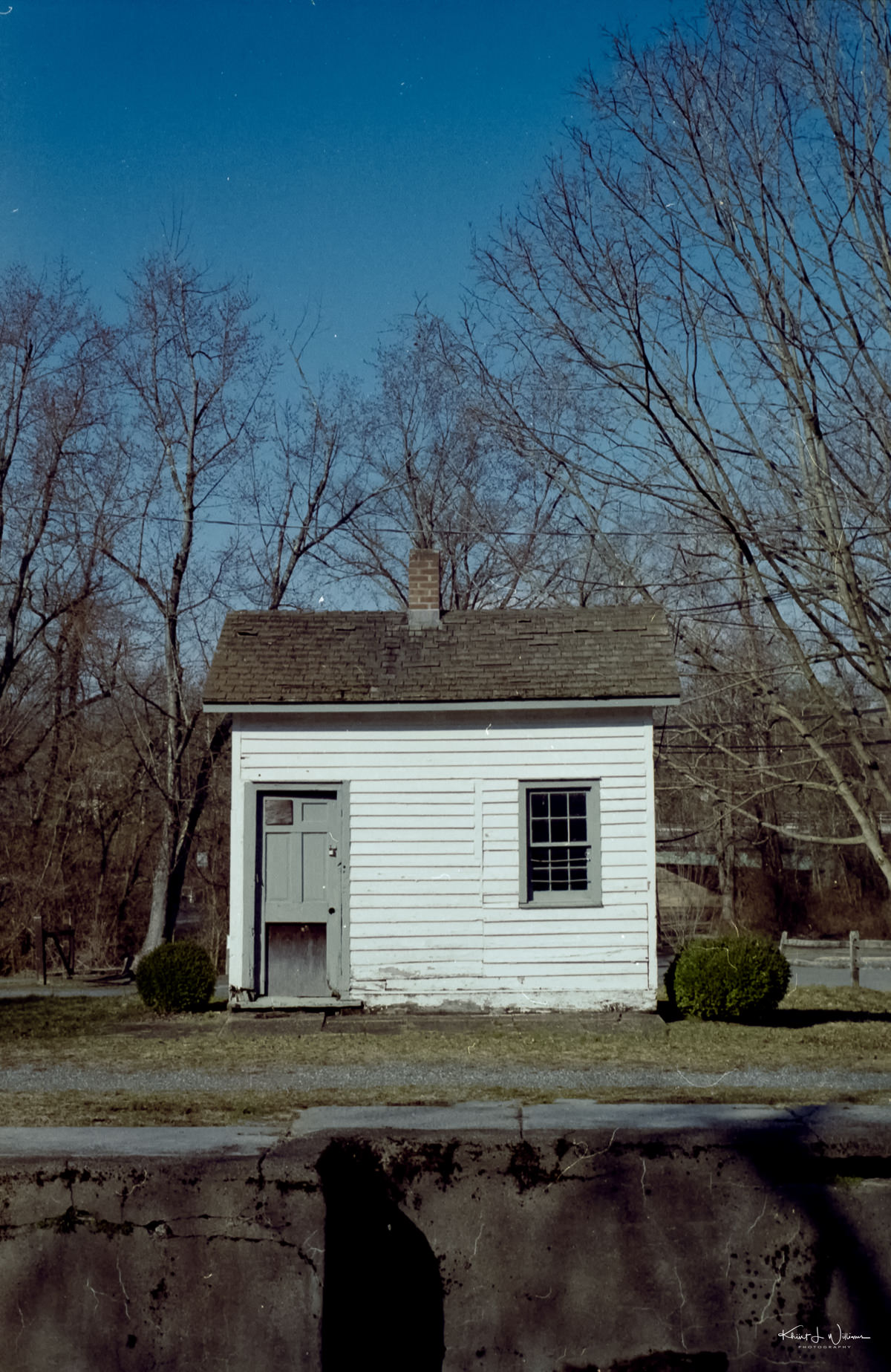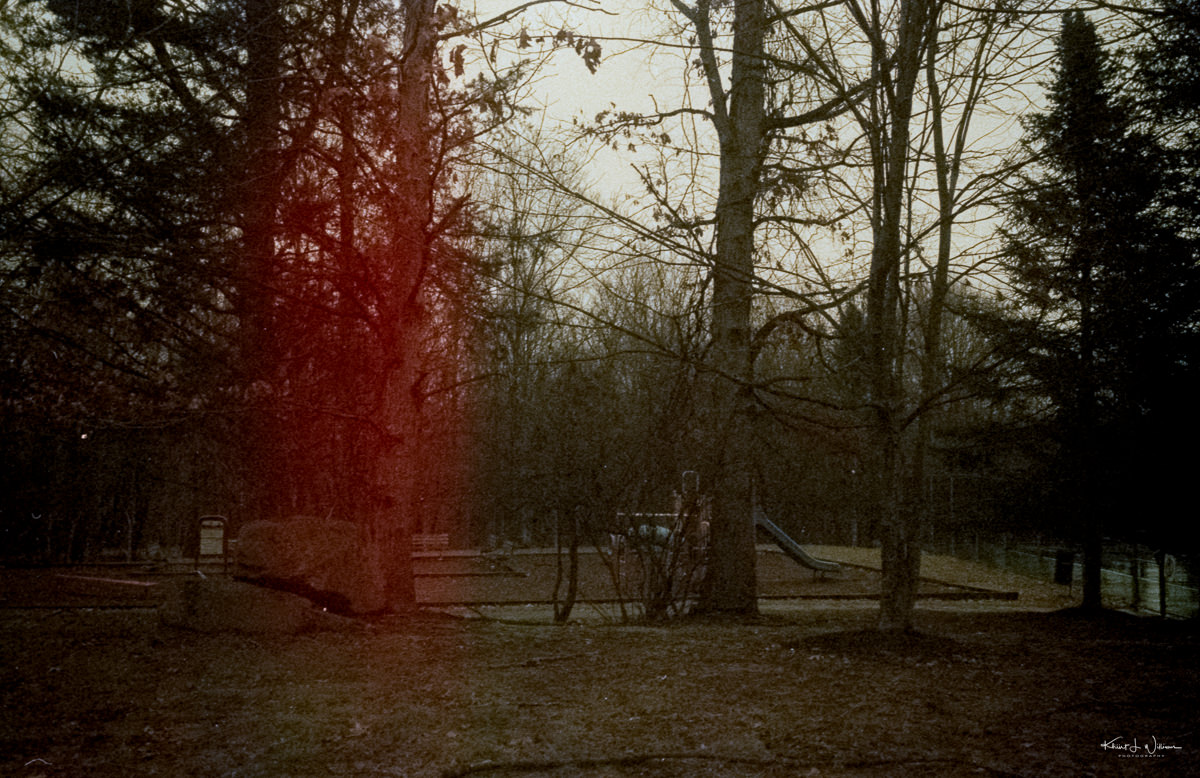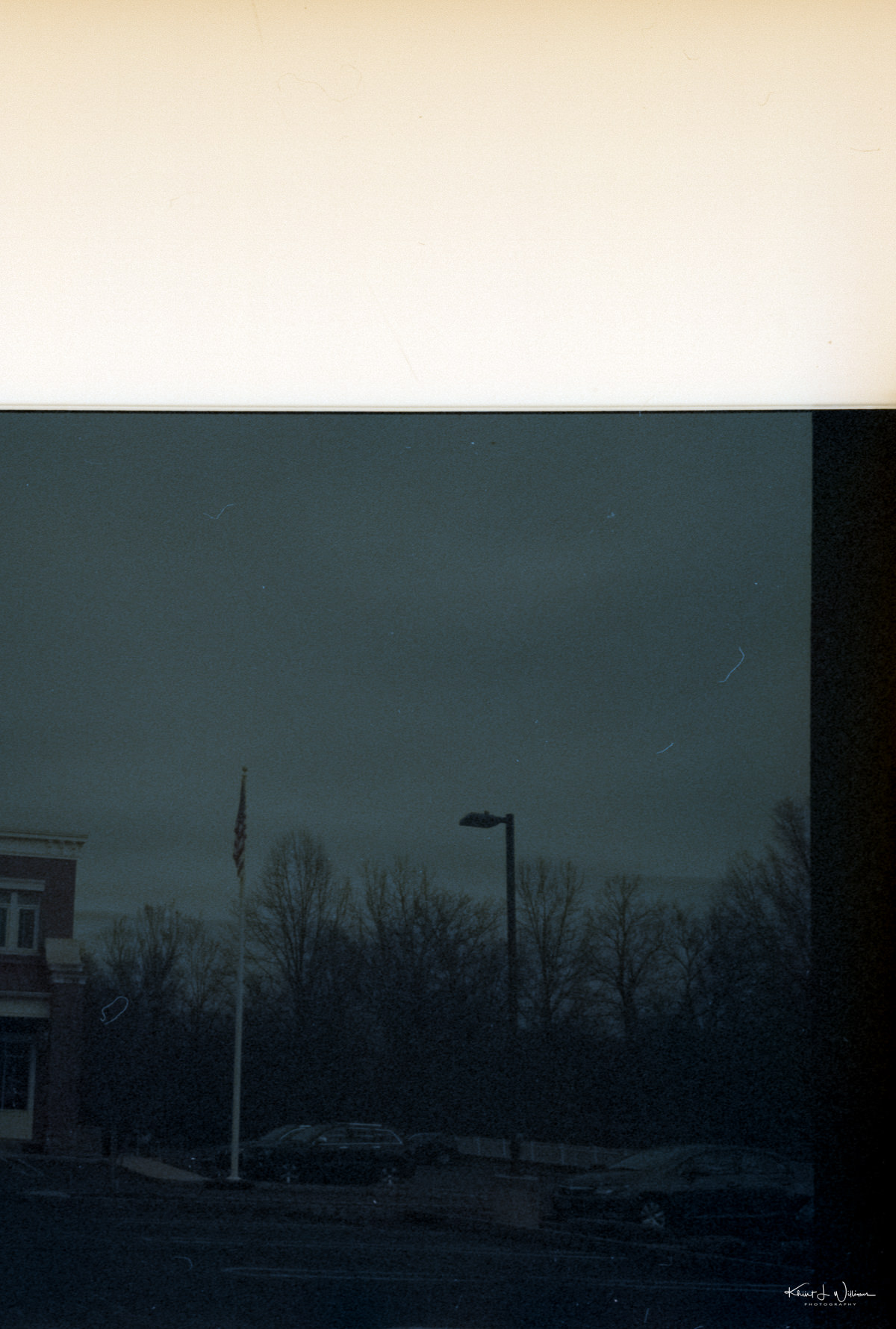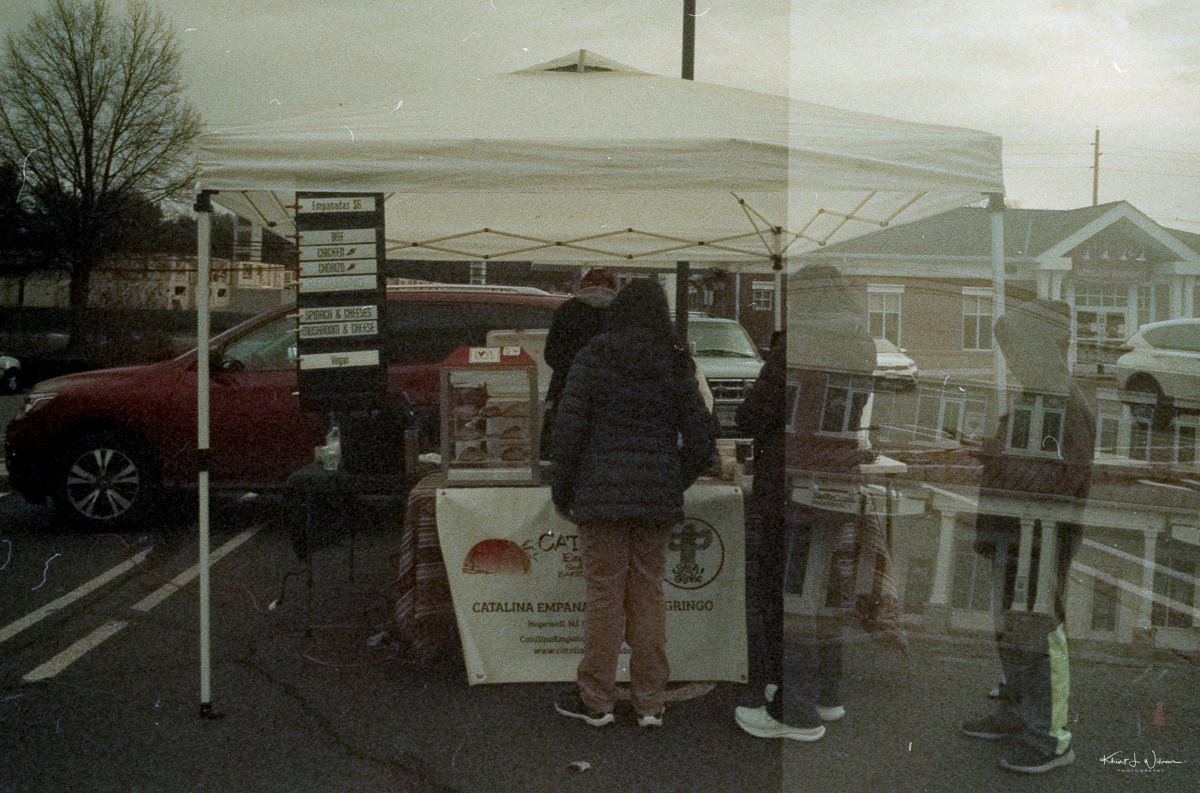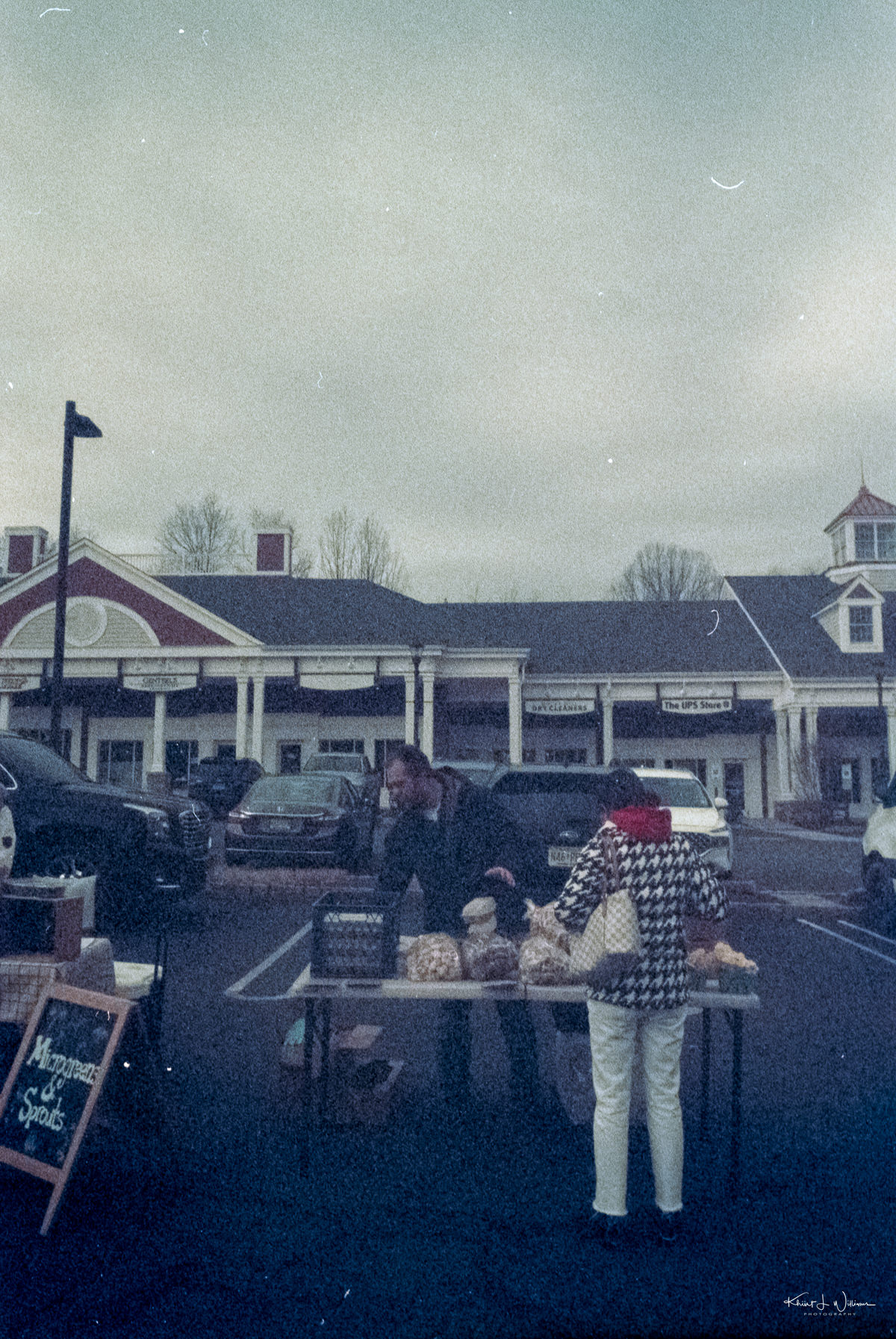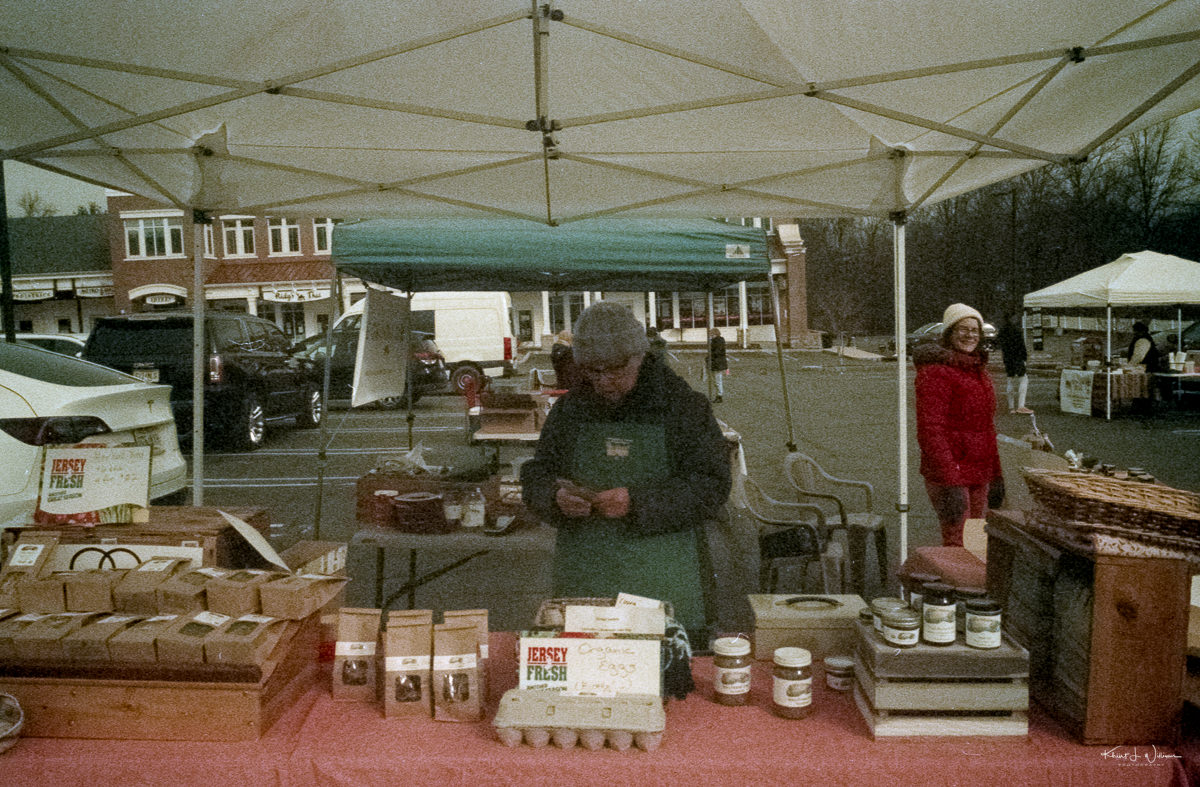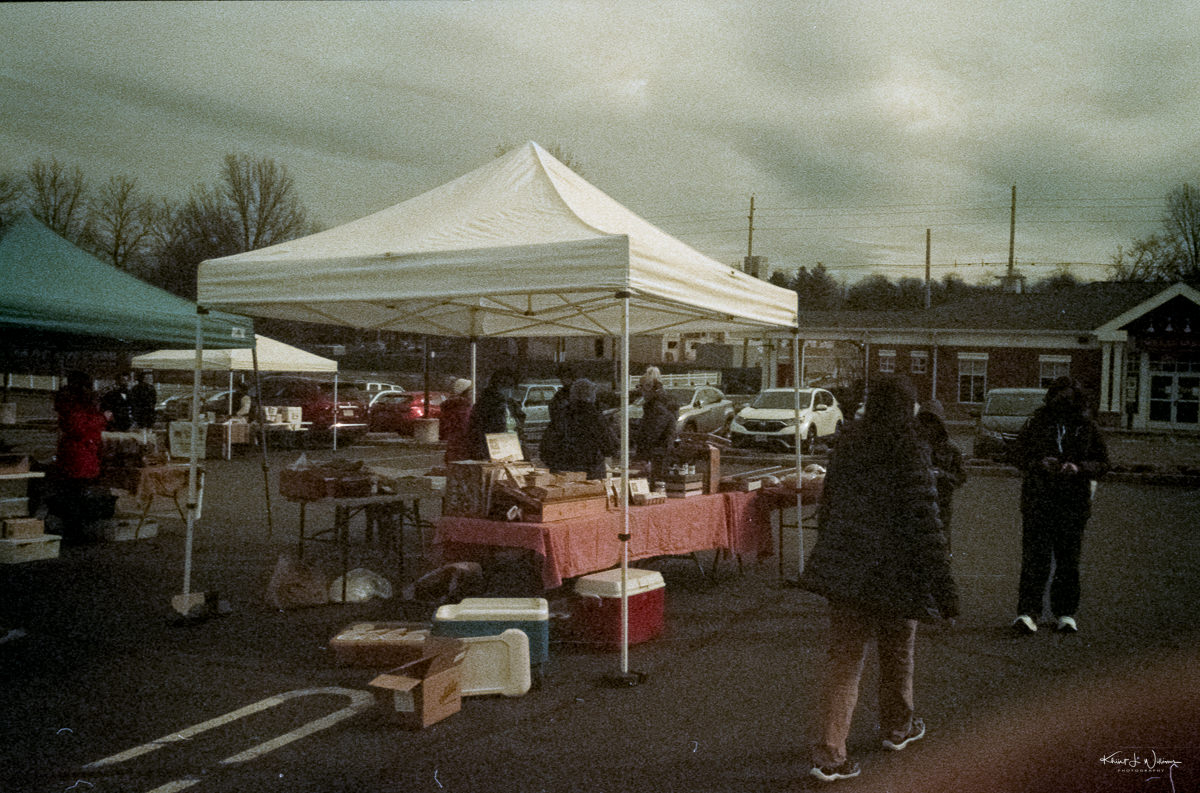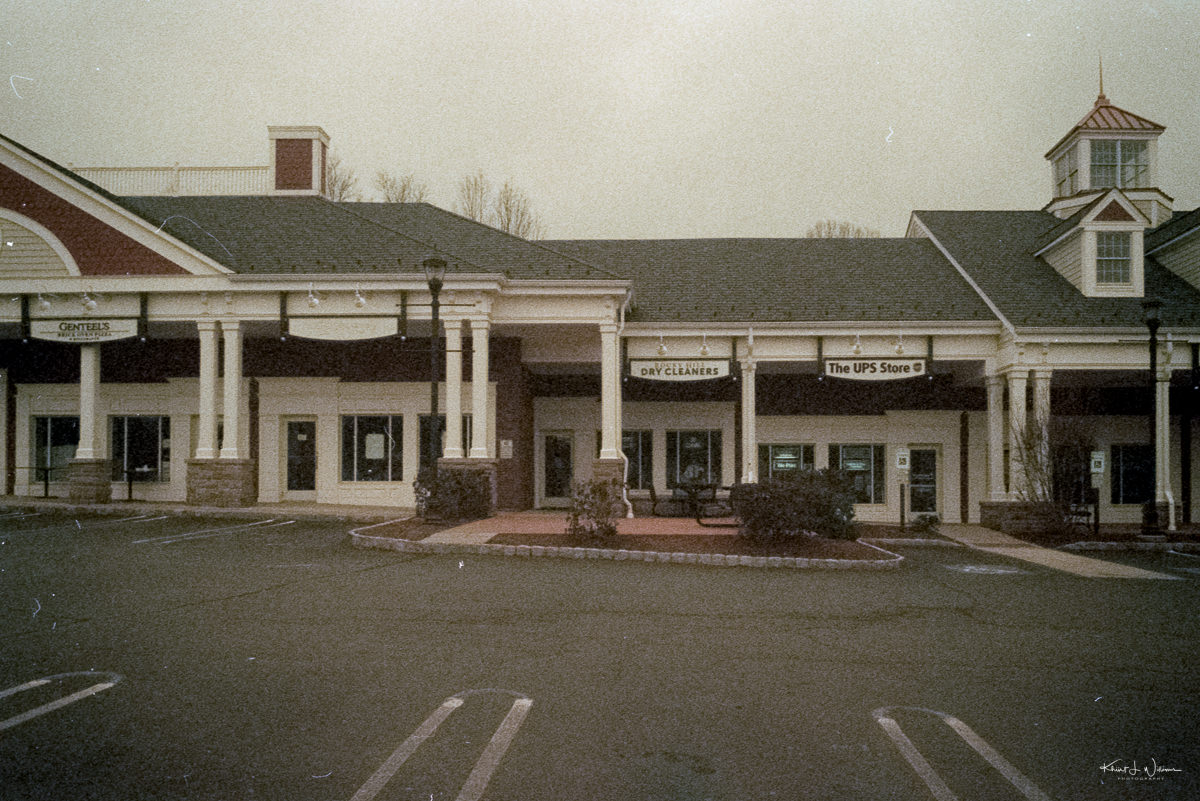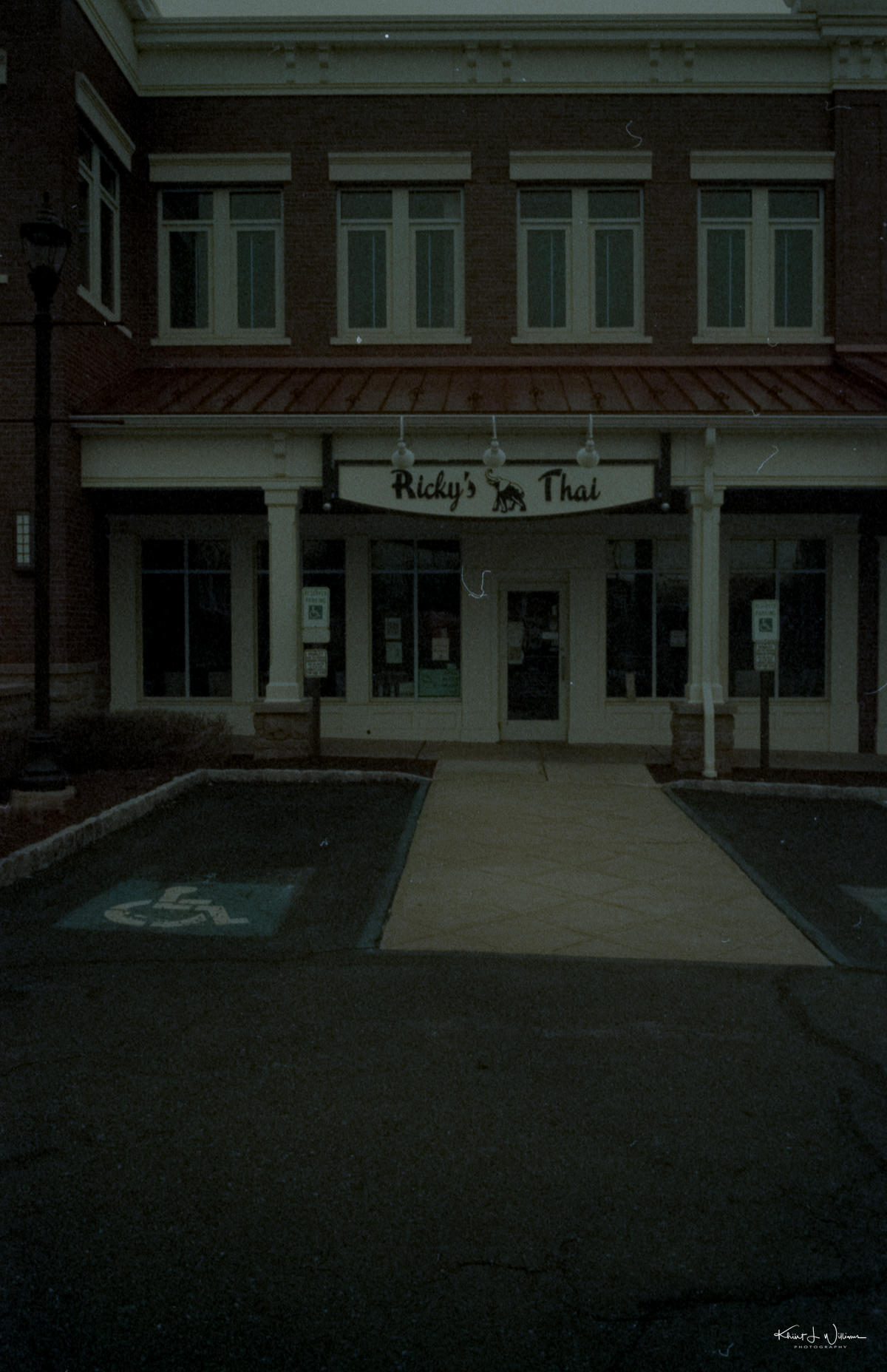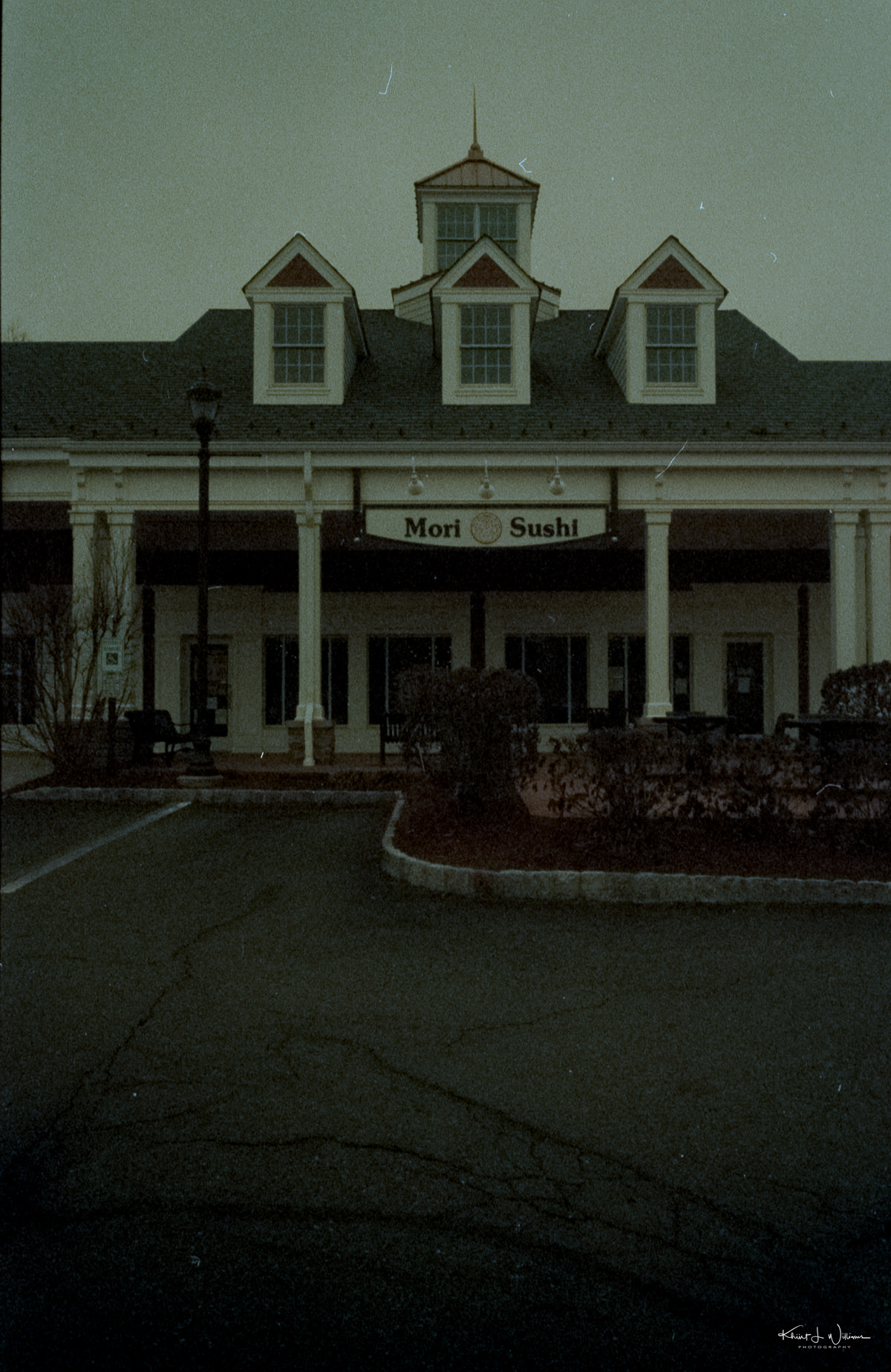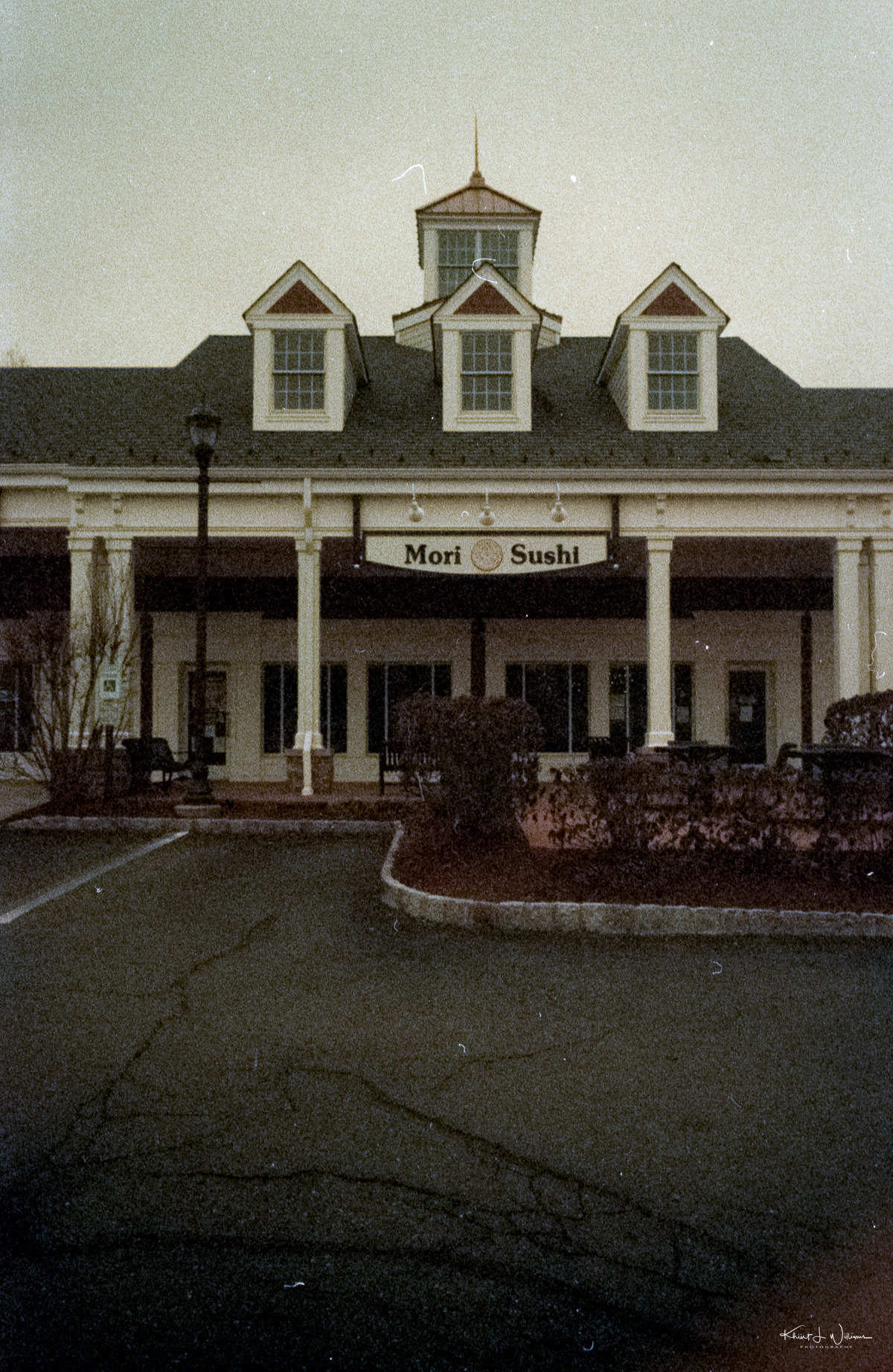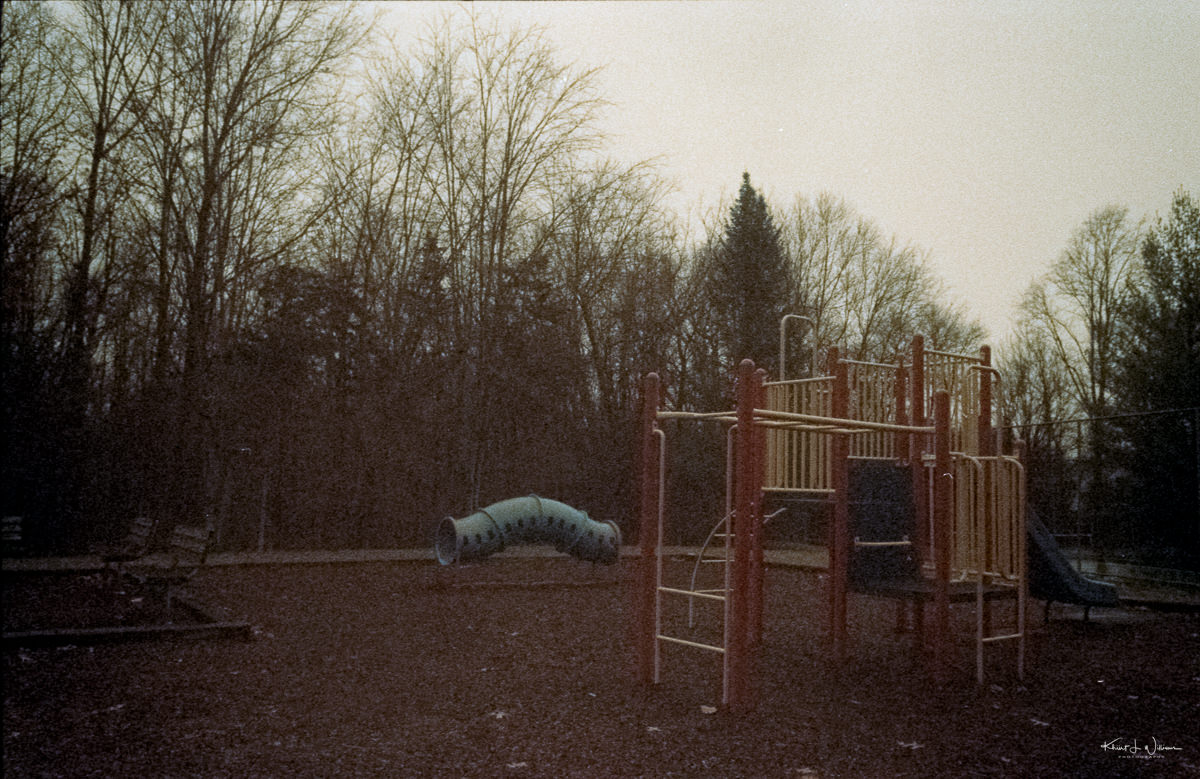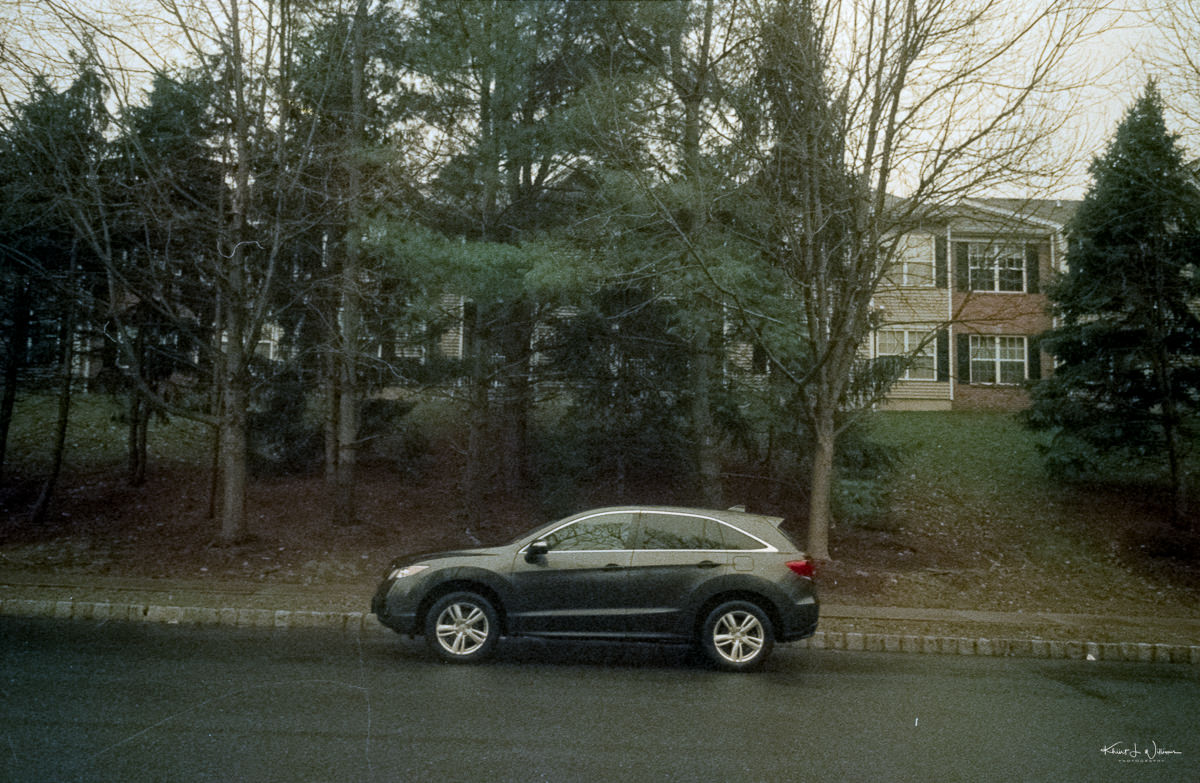This is my first time using Ilford FP4 Plus 125, and I wish I had only bought more than one cartridge. I loaded the cartridge into my default film photography kit, my Minolta XD-11 with MD Rokkor-X 45mm F2 lens. I also brought my Manfrotto tripod.
I drove again to Kingston Village Historical Village, where I had exposed a roll of expired Fujicolor Super HQ 200 the day before. I focused (no pun intended) on the Kingston Lock, the Locktender's House, and the Lock tollhouse. The early morning sun shining through the trees cast distinct shadows on the north-facing side of the Kingston Lock Tender's House. This would be a great way to test how well the film stock handles light and shadow.
The Lock Tender's House at the Delaware and Raritan Canal Lock in Kingston is a historic building that dates back to the 19th century. The Delaware and Raritan Canal was an important transportation route that ran through central New Jersey, connecting the Delaware River to the Raritan River. The lock tender's job was to operate the lock, allowing boats to navigate the canal by raising or lowering the water level.
The Lock Tender's House was built in the 1830s and served as the residence for the lock tender and his family. The house is a small, one-story, clapboard-sided structure with a gabled roof and a chimney. The building is now the Delaware and Raritan Canal State Park headquarters, which manages the parkland surrounding the canal.
Today, visitors to the Lock Tender's House can learn about the history of the Delaware and Raritan Canal and the role of the lock tender in maintaining the canal's operation. The house is open to the public during park hours and features exhibits and interpretive displays about the canal's history and ecology.
The Tollhouse was the collection point for tolls charged to boats passing through the lock. The Delaware and Raritan Canal Company charged tolls based on the cargo's weight. The Tollhouse was strategically located near the lock, so boats passing through it would have to stop and pay the toll before continuing their journey.
Ilford FP4 Plus 125 is a high-quality black and white film designed for 35mm cameras. It is a medium-speed film that offers a classic, versatile look with excellent sharpness, fine grain, and wide exposure latitude. This makes it ideal for various photographic applications, from fine art and portrait photography to landscape and architectural photography.
According to Ilford, the film is coated on a polyester base and features a silver emulsion optimized for use with traditional black-and-white development processes. Its ISO rating of 125 means it performs well in high-light situations and provides good detail and contrast in both highlights and shadows. I sent the exposed film to Boutique Film Lab for development. I scanned the negatives using VueScan 9 and my Epson Perfection V600 and used Negative Lab Pro to convert the scans. I did some perspective corrections and moved the exposure slide -1/3 inpleasedhtroom. The film also has a wide exposure latitude, which means it can be over or underexposed by a few stops without significantly affecting the final image quality. I am very happy with the results.
Ilford FP4 Plus 125 produced rich blacks, bright whites, and a full range of greys. The fine-grain structure helped to create sharp, detailed images with good edge definitions. I've had some issues with getting sharp images from the film, which I chalked up to the challenges of manually focusing the lens because of my eye surgeries. But the pictures from the scans of Ilford FP4 Plus 125 were sharp, which makes me wonder if my previous experience is due to the film stocks I have used.
| Name | Ilford FP4 Plus |
|---|---|
| Format | 35mm |
| Features | chromogenic black and white negative |
| Native ISO | 125 |
| Lab | Boutique Film Lab |
| Process | B+W |
| Scanner | Epson Perfection V600 |
| Software | VueScan 9, Negative Lab Pro, Adobe Lightroom |
